Download the printable PDF version of this guide to bring along to the conference here.
Access

Booth 5175
Contact: Lindsey Eaton, sales and marketing operations manager
lindsey.eaton@accessefm.com
913.752.9938
Hundreds of hospitals worldwide use paperless Access solutions to integrate e-forms, electronic patient signatures, and clinical data into EHRs.
Access Passport is a web-based forms solution that removes all paper from your forms processes — making them completely electronic from start to finish. Using any device from any location, your clinical and administrative staff can quickly access the forms they need, collect information in record time, and capture patient and other signatures without printing or scanning. Once a form is complete, Passport can kick off a workflow process, instantly deliver the data to the people and systems that need it, perform valuable management tasks and more. Visit the Access booth (5175) at HIMSS to see Passport in action and learn more at www.accessefm.com
Giveaway: to enter a drawing for an Apple TV, visit the Access booth (5175) and ask “What is the Green Paper Monster?” We’ll do the drawing on the last of the show and e-mail the winner to come pick up their prize. If you can’t make it before the close of the show, we will mail you the Apple TV.
Accreon, Inc

To schedule a meeting:
Contact: Gareth Kenton, sales leader
gareth.kenton@accreon.com
617.899.5394
We do look forward to connecting with you in our meeting space at the conference. Accreon is a healthcare technology and business services firm focused on integrating and managing health information.
We assist healthcare organizations to: achieve interoperability by integrating their IT ecosystem; establish an analytical environment that empowers learning, agility, and performance resulting in improved outcomes, finances, and satisfaction; and enhance IT innovation by providing knowledgeable healthcare expertise and tools to bring solutions to market faster.
Accreon has delivered services and built solutions across North America for healthcare provider organizations, government entities, medical device companies, and EMR vendors.
Mention you were referred to Accreon through HIStalk and receive 15 percent off any resulting business established at HIMSS.
ADP AdvancedMD

To schedule a meeting:
Contact: Jim Elliot, vice president of marketing
jelliot@advancedmd.com
435.729.0343
ADP AdvancedMD executives will be available at HIMSS to discuss the impact that big data and business intelligence will have on the private physician and how ADP AdvancedMD is addressing the needs of medical practices. They also will be available to address what key challenges doctors are facing in 2014, including Meaningful Use adoption, weathering the implementation of ACA within the industry and its impact on patient population and reimbursements, preparing for the switch to ICD-10, and juggling everyday issues and challenges to ensure today’s claims will get paid in a reasonable amount of time.
AirStrip

Booth 6144
Contact: Chris Lato, marketing communications manager
chrislato@airstrip.com
608.219.7231
Join AirStrip, the leader in clinical mobility, at HIMSS14. Learn more about AirStrip ONE, the first enterprise-capable, vendor-, platform-, and data-source-agnostic clinical mobility solution. AirStrip ONE can help you transform healthcare, giving clinicians access to patient information anytime, anywhere, across the care continuum. Contact us today to request a meeting with AirStrip executives or schedule a demo.
While at HIMSS, come by AirStrip Booth 6144 to register to win an UP wristband. We’ll be giving away one wristband each afternoon to a lucky winner.
Alere Accountable Care Solutions
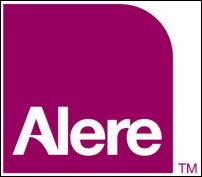
Booth 5345
Contact: Natalie Pietrzak, director of marketing
Natalie.Pietrzak@alere.com
855.935.5644
The only health information exchange platform that leverages the products and services necessary to enable patient participation, improved communication, and access to information throughout each healthcare team:
- Health information exchange platform
- State of the art analytics engine
- At-home monitoring devices and wearable sensors
- Patient-friendly and comprehensive patient health record
- National care management staff
See for yourself at HIMSS14 Booth 5345. Learn more by visiting http://www.alere.com or set up a meeting on the HIMSS showroom floor with any of our division CEOs by contacting Natalie.Pietrzak@alere.com.
API Healthcare

Booth 2664
Contact: Christine Hoxworth, vice president of marketing
christine.hoxworth@apihealthcare.com
262.670.2727
API Healthcare, the largest healthcare-specific vendor focused on workforce management solutions, is also the architect of the Healthcare Workforce Information Exchange (HwIE): a revolutionary solution that facilitates the sharing of workforce data across the entire continuum of care.
Driven by the mission to elevate quality and performance across the healthcare community through innovative workforce solutions and services, API Healthcare has been dedicated to the healthcare industry for more than 30 years. The company’s staffing and scheduling, patient classification, human resources, talent management, payroll, time and attendance, business analytics, and staffing agency solutions are used by more than 1,600 hospitals and staffing agencies.
API Healthcare has been rated by KLAS in the Top 20 Best in KLAS Awards Report as the top time and attendance provider system for the last 12 years (2002-2013) and the top staffing and scheduling solution in 2012 and 2013.
Aprima Medical Software

Booth 2621
Contact: salesinfo@aprima.com
866.960.6890, option 7
Aprima provides innovative electronic health record, practice management, and revenue cycle management solutions for medical practices. The Aprima EHR/PM is an integrated system built on a single database. Aprima uses a fast, flexible design that adapts automatically to a physician’s workflow and sets the benchmark for ease of use, speed and flexibility. Aprima is one of the few companies with a 15-year track record of success, including Certification for Meaningful Use Stage 2 in 2013. To learn more about the details of this and other certifications click here.
Thousands of Aprima users are benefiting from improved quality of care, improved patient satisfaction, improved quality of life, and an improved bottom line. Based in Carrollton, TX, Aprima performs all development, support, and implementation from the US.
We will hold a raffle each day at HIMSS for a $250 gift card.
Arcadia Healthcare Solutions

Booth 2029
Contact: Greg Chittim, senior director
greg.chittim@arcadiasolutions.com
603.496.1242
Come visit our booth (2029, right down the street from Epic) to relax, refresh, and learn more about a Arcadia. You may not of heard of us, but you certainly know our clients. Five Pioneer ACOs, leading academic medical centers, national health systems, managed care organizations, and leading Blues. We’ve been implementing vendor-agnostic analytics and real system transformation for years, driving real demonstrable value and proven ROI.
Founded in 2002 and headquartered outside Boston, with offices in New York, Seattle, and Nashville, Arcadia Healthcare Solutions is an innovative and nationally recognized leader in the healthcare technology and services industry. Arcadia provides services and technology for EHR outsourcing and consulting; data integration and population analytics; and care delivery transformation and coaching. With a focus on both healthcare provider and payer solutions, Arcadia has a unique cross-industry perspective on using data to drive healthcare transformation.
Aspen Advisors

To schedule a meeting:
Contact: Dan Herman, founder and managing principal
info@aspenadvisors.net
800.697.4350
Aspen Advisors is a world-class professional services firm dedicated to helping healthcare delivery organizations enhance processes and streamline operations through the strategic and effective use of technology.
From strategy to execution to optimization, our core services have been tailored to help address industry priorities:
- Reduce operating costs
- Implement and realize the full benefit of Electronic Health Records
- Transition from volume to value
- Harness the power of data and analytics
- Enable the connected community
- Position for the future of revenue cycle management
Ultimately, our goal is to help you realize the value of your IT investments and continue to improve the effectiveness of your organization in improving the patient experience of care and the health of populations, while reducing the per capita cost of healthcare.
AT&T
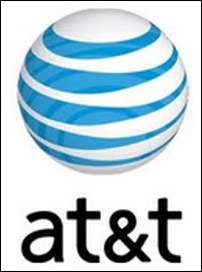
Booth 4465
Contact: Candace James, senior marketing manager
cj8362@att.com
678.230.7100
In the network of possibilities, wireless and cloud-based solutions enable providers to focus on what they do best. AT&T is working with healthcare providers to embrace the spirit of innovation and collaboration needed to improve care quality and reduce costs. Its AT&T ForHealth practice is developing and delivering advanced IT solutions in five areas: care collaboration platform and health information exchange; cloud-based medical imaging; mHealth; remote patient monitoring; and telehealth. AT&T is committed to utilizing its network, scale, and technological expertise to help the healthcare industry address and solve its challenges.
See the complete AT&T ForHealth portfolio in booth 4465 to learn how healthcare can be more accessible, more affordable, and more connected.
Aventura

Booth 1831
Contact: Catherine Loop, marketing associate
catherine.loop@aventurahq.com
970.218.1630
As the leading provider of awareness computing for the healthcare industry, Aventura provides instant-on roaming for virtual and mobile applications in hospitals.
Based on user, role, location, device, and patient awareness, Aventura immediately delivers a virtual desktop and dynamically provisions the applications a user needs, eliminating wasteful clicks and keystrokes. Set up an appointment to see how awareness computing revolutionizes clinical workflow support with roaming desktop at booth 1831.
Scott Raymond, executive director of information services at MemorialCare Health System, explores how Orange Coast’s awareness-based solution provides clinical workflow support with roaming desktops.
Glenn Mamary, vice president and CIO, and Dr. Wayne Fellmeth reveal how awareness computing enhances patient-centered care delivery and facilitates improved clinician collaboration at Hunterdon Healthcare System.
Experience the magic of Brandon K. Parker throughout exhibit hours. Join Aventura for food, drinks, magic, and fun at the 1800 row block party from 4:00 to 6:00 pm at booth 1831.
Awarepoint

Booth 1817
Contact: Tarah Kading, marketing coordinator
tkading@awarepoint.com
858.345.5000 x745
Visit Awarepoint’s booth 1817 to learn how the technology optimizes healthcare workflow with the industry’s only cloud-based, Real-time Location System (RTLS) in an integrated solution of software, technology and managed services on a single platform. Dedicated exclusively to healthcare, Awarepoint offers the experience, reliability and proven solutions that drive positive clinical and financial outcomes in the largest healthcare active RTLS deployments in the world.
Key differentiators include:
- Self-healing mesh network. Utilizing existing electrical outlets, our wireless mesh network is reliable, accurate, and self-healing, and eliminates the risks of WiFi interference and bandwidth burden, with no additional wiring or hardware required.
- Fully integrated solution. The integrated hardware and software package optimizes identification and resolution of workflow issues, and drives proactive improvements.
- Managed services. Awarepoint supports and maintains the network infrastructure and hardware devices, lifting the burden from hospital staff.
- Single point of contact. http://www.awarepoint.com
Beacon Partners, Inc.
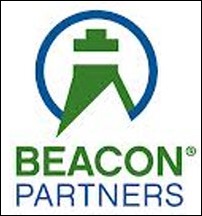
Booth 4165
Contact: Jeannette Pforr, marketing and events specialist
jpforr@beaconpartners.com
781.982.8400
Stop by our booth on Monday and Tuesday afternoons for food and beverages and to speak with our team of experts.
Billian’s HealthDATA / Porter Research

Booth 3303
Contact: Jennifer Dennard, social marketing director
jdennard@billian.com
678.569.4872
Find out how your sales and marketing teams can sell smarter, not harder, with the help of Billian’s HealthDATA and Porter Research. Stop by booth 3303 at HIMSS14 to learn more about Billian’s HealthDATA provider benchmarking and vendor sales solutions. While you’re there, learn more about Porter Research’s Go-to-Market Strategy service line and pick up our latest white paper on consumer engagement.
BlueTree Network
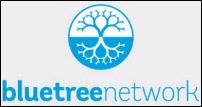
To schedule a meeting:
Contact: Nicole Meidinger, VP of sales and business development
nicole@bluetreenetwork.com
574.360.9029
BlueTree has built a network of over 400 specialized and trusted healthcare IT experts. Our fresh model attracts and supports the best talent and allows us to offer customized and flexible solutions to health systems. Here’s an overview of our unique model which has helped us to become the premier Epic consulting group.
At BlueTree, our philosophy centers on providing and recognizing value. We have some of the strongest healthcare IT people around and have been fortunate to work with incredible healthcare organizations. We enjoy collaborating with our clients to create custom solutions to difficult problems.
Feel free to get in touch by phone or email with any questions or opportunities.
Bottomline Technologies

Booth 1545
Contact: Molly Plank, manager of healthcare marketing
mplank@bottomline.com
330.569.4753
Bottomline Healthcare makes it easy to more efficiently complete the longitudinal patient record by eliminating paper from information, signature, and data capture processes – and seamlessly integrates with any downstream system. Don’t forget to enter to win our daily grand prize, a $500 Delta Airlines eGift certificate. Just ask about the HIMSS14 #Captureit contest.
During your visit, you can:
- Learn more about our partnership with Hyland Software
- Discuss best practices for replacing paper with mobile tablets, such as iPads, to capture clean, discrete patient data and eSignatures
- Learn how to simplify operational processes by making captured, completed forms instantly accessible to any area of the facility without document scanning
- Review enhancements to existing on-demand forms automation products and understand how they can be applied in your environment
CareTech Solutions

Booth 5275
Contact: Joe Pascaretta, sales executive
Joseph.Pascaretta@caretech.com
248.709.4794
CareTech Solutions brings its “Best in KLAS” Clinical Service Desk experience to you at HIMSS14.
Spend a few minutes or stay as long as you like – this is not a sales presentation. In a “live” help desk setting, clinical service desk analysts will be available to answer all of your help desk questions in booth 5275, including:
- How do I implement a clinical service desk?
- How are analysts trained to resolve my EMR calls?
- How can I use the data collected to reduce my call volumes?
- What is a best-in-class resolution and escalation process?
- How does a Clinical Service Desk improve the productivity of my IT staff?
- And so many more…
Additionally, three CareTech customers, Central Maine Healthcare, Broward Health, and Oakwood Healthcare, were selected to speak at HIMSS14 to discuss multiple IT improvement initiatives, including data security, website strategy, and mobile design.
- Denis Tanguay, CIO of Central Maine Healthcare, and Jeff Bell, director of IT security and risk services at CareTech Solutions, will present on the “Journey to Encryption of Data at Rest,” Wednesday, February 26 at 8:30 a.m. in room 204A.
- Jennifer Silverio, web and social media manager at Broward Health, and Ted Balowski, web executive at CareTech Solutions, will present on “Aligning Hospital Web Strategy with Generational Shift and Values,” Thursday, February 27 at 10:30 a.m. in room 224A.
- Mary Zatina, senior vice president of government relations and corporate communications at Oakwood Healthcare, and Anthony Hepp, formerly of CareTech Solutions and now with Team Detroit, will present on “Mobile Website Innovation: The Case for Responsive Design,” Thursday, February 27 at noon in room 330A.
For more information about CareTech Solutions, visit http://www.caretech.com.
Capsule Tech., Inc.

Booth 2329
Contact: Brianna Roy, marketing and events coordinator
briannar@capsuletech.com
978.482.2339
Capsule’s SmartLinx Medical Device Information System allows hospitals to not only move patient point-of-care data but also use it. As the leader in device integration, Capsule delivers real-time active monitoring with predictive clinical and operational analytics to optimize clinical workflow. With proven connectivity for more than 670 medical devices, Capsule’s flexible platform with centralized management facilitates clinical efficiency and quality patient care across your organization.
Visit Capsule’s booth 2329 and enter to win a GoPro Hero 3.
CareSync

Booth 7293 (Startup Showcase)
Contact: Amy Gleason, COO
amy.gleason@caresync.com
813.701.1811
Feel free to reach out to us in advance by completing this form: http://info.caresync.com/himss14 which will get you on our HIMSS mailing list.
Meet the CareSync team at the Startup Showcase to learn more about how the patient-centered engagement platform is changing the way patients, care teams, and providers are communicating. CareSync helps all stakeholders in healthcare by giving patients access to their medical information, transcribing, and organizing it into custom Care Reports, making it meaningful and easily shareable so that families and caregivers can collaborate with patients and providers to work together for better outcomes.
We will be offering product demonstrations, and holding numerous giveaways throughout the show, including CareSync Plus subscriptions and an iPad Mini.
Caristix

To schedule a meeting:
Contact: Stephane Vigot, president
stephane.vigot@caristix.com
1.877.872.0027 ext. 153
Caristix technology serves to simplify the development, deployment, and maintenance of healthcare applications for hospitals. We’re building products that help vendors and hospital become more productive. Carisitix enables interoperability and gets your software systems playing well together.
Visit us at the Interfaceware booth 2229 to get a look at out latest software and discuss how we help you get control of the HL7 interface lifecycle.
Certify Data Systems, Inc.

Booth 3729
Contact: David Caldwell, EVP, sales and marketing
dcaldwell@certifydatasystems.com
408.236.7494
Together with Humana, Certify and Anvita are redefining value-driven health care. Our fully-integrated population health management platform seamlessly connects disparate health care systems and transforms patient data into real-time Actionable Health Intelligence for improved care coordination.
We empower providers, administrators, and ACOs with the insights necessary to deliver the right information, at the right time, to the entire care team, for better outcomes. Our collective expertise and advanced technologies achieve new care delivery model objectives and improve the health and well-being of populations.
Stop by booth 3729 for a healthy smoothie.
Clinical Architecture

Booth 1077
Contact: Marck DuBois, vice president, sales
marck_dubois@clinicalarchitecture.com
317.694.5333
Change is here. Clinical Architecture is changing the way terminology and ontology are created, updated, extended, normalized, distributed, and utilized in healthcare. Symedical allows you to manage all terminology and ontology assets from one centralized tool and automates the process of content delivery. Come by our booth and let us show you how Symedical can empower your organization to maximize the value of your terminology assets. Change is here, it’s at booth 1077.
Coastal Healthcare Consulting

To schedule a meeting:
Contact: Amy Noel, CEO
Amy.Noel@coastalhealthcare.com
206.321.9840
Gay Fright, EVP of business development
gay.fright@coastalhealthcare.com
760.333.0294
Coastal Healthcare Consulting, Inc. (“Coastal”) has been a premier provider of healthcare IT consulting services since 1995. We are a national firm based in the Seattle area. We have a proven track record of performance having completed more than 850 projects for more than 80 clients and were awarded “Best in KLAS,” clinical implementation, supportive for 2005-2009.
We began the company with a focus on providing EMR implementation services for healthcare clients. We have expanded our services to include the major EMR vendors, additional vendor partnerships, legacy support, and project management.
CommVault

Booth 3482
Contact: Al Richards, healthcare marketing
arichards@commvault.com
908.442.3402
See how CommVault Simpana 10 can help you protect, manage, and access your healthcare information like never before.
Stop by booth 3482 and you’ll receive a complementary set of ear buds and hear how Simpana is much more than a backup and restore recovery solution.
CommVault will also be revealing results from its latest healthcare IT survey. Come by the CommVault booth and learn how organizations like yours are overcoming their healthcare IT challenges. Learn how you can transform healthcare data management with Simpana software.
If you’d like to schedule a dedicated appointment with one of our healthcare IT experts, please email us at CVHealthcare@commvault.com and indicate your preferred time. A CommVault representative will get back with you to confirm shortly.
Connance, Inc.

To schedule a meeting:
Contact: Brian Graves, vice president of marketing and communications
bgraves@connance.com
617.512.6971
Connance brings world-class predictive analytics and insights from hundreds of clinical settings to transform the performance of financial processes at hospitals, physician groups, and outsourcing organizations. Connance solutions sustainably increase cash flow, reduce operating costs, and improve policy compliance in self-pay, denial management, charity, and outsourcing processes. With clients like Centura Health, CHRISTUS Health, Florida Hospital, and Geisinger Health System, Connance is changing the expectations of financial executives.
CoverMyMeds

Booth 4495
Contact: Scott Rybak, SVP, business development
srybak@covermymeds.com
410.340.8895
Health plans, pharmacies, and physicians use CoverMyMeds to automate their prior authorization (PA) process. In doing so, they reduce prescription abandonment and administrative waste. Our network includes several hundred thousand physician offices and most pharmacies in the U.S.
We just launched ePA Now, our EHR integration program. By integrating with our REST API, our partners get a solution that:
- Supports the NCPDP ePA standard transaction
- Works for all plans, not just those that support ePA – turns PA faxes and phone calls from more than 80 percent of US pharmacies into a task-list in the EHR.
To sweeten the deal, we couple our API with a:
- Financial incentive program that adds a very meaningful revenue stream for the EHR
- Programmers to fly out to your office to complete the integration with you — marketing and rollout support to help turn your new PA solution into a competitive advantage and revenue driver.
Covisint Corporation

Booth 6751
Contact: Kimberly Leonard, marketing manager
kimberly.leonard@covisint.com
313.227.7000
Join Covisint at HIMSS in booth 6751 to discover and learn more about Covisint’s integrated healthcare platform. As the leader in today’s cloud computing market, Covisint offers “One” platform that securely integrates health information wherever it exists, maximizes performance incentives, reduces avoidable healthcare expense, and delivers care more effectively.
At HIMSS, we’ll highlight four key areas: population health management, predictive analytics, care coordination, and our cloud engagement platform. Through informative product demonstrations, engaging client-led presentations, and solutions-oriented one-to-one interactions, you’re sure to see why many providers and payers are using Covisint Healthcare to manage care more effectively.
Craneware

To schedule a meeting:
Contact: Ann Marie Brown, EVP of marketing
a.brown@craneware.com
913.548.2810
Craneware (AIM: CRW.L) is the leader in automated revenue integrity solutions that improve financial performance for healthcare organizations. Craneware’s market-driven, SaaS solutions help hospitals and other healthcare providers more effectively price, charge, code, and retain earned revenue for patient care services and supplies. This optimizes reimbursement, increases operational efficiency, and minimizes compliance risk.
By partnering with Craneware, clients achieve the visibility required to identify, address and prevent revenue leakage. Craneware Revenue Integrity Solutions encompass four product families: Access Management & Strategic Pricing, Audit & Revenue Recovery, Revenue Cycle, and Supply Management. To learn more, visit craneware.com and stoptheleakage.com.
CTG Health Solutions
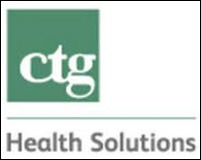
Booth 944
Contact: Amanda LeBlanc, managing director of marketing and communications
amanda.leblanc@ctghs.com
225.772.8865
CTG Health Solutions, the healthcare division of CTG, is a leading IT consulting firm dedicated solely to helping provider and payer organizations achieve clinical and financial goals through effective technology and business solutions. In more than 25 years of operation, we have provided healthcare IT, operational, and strategic consulting support to over 600 organizations. CTG Health Solutions offers a comprehensive suite of advisory and application/IT support services, including planning, assessment, EHR implementation and optimization, analytics, legacy and production application management/support, revenue cycle recovery and optimization, care management, and solutions to meet regulatory requirements of ICD-10, meaningful use, and accountable care.
Visit us at booth 944 for the HIMSS Survival Kit from your friends at CTG Health Solutions. We will also have coffee and bottled water in the booth.
Culbert Healthcare Solutions

To schedule a meeting:
Contact: Brad Boyd
bboyd@culberthealth.com
857.919.2003
Culbert offers comprehensive management consulting services for physicians, hospitals, and healthcare systems to improve the delivery of patient care in today’s challenging environment.
Culbert’s seasoned healthcare professionals possess strong patient access, clinical, and revenue cycle operations experience combined with IT vendor focused expertise which uniquely qualifies the firm to select, implement, and optimize technology solutions in complex healthcare organizations.
Cumberland Consulting Group
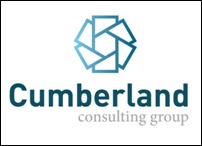
To schedule a meeting:
Contact: David Vreeland, partner
david.vreeland@cumberlandcg.com
615.335.5272
Cumberland is hosting a hospitality suite at the Hyatt Regency (formerly the Peabody) during the conference. Cumberland Consulting Group, LLC is a national technology implementation and project management firm serving ambulatory, acute, post-acute and long-term healthcare providers, health plan and payors, and life sciences companies. Through the implementation of new technologies, Cumberland helps health organizations nationwide advance the quality of services they deliver and improve overall business performance.
For more information on Cumberland, visit http://www.cumberlandcg.com.
DataMotion

To schedule a meeting:
Contacts:
Bob Janacek, CTO, bobj@datamotion.com, 973.452.5321
Andy Nieto, health IT strategist, andyn@datamotion.com, 502.905.0230
Hugh Gilenson, director business development, healthcare hughg@datamotion.com, 201.417.1090
DataMotion provides HIPAA-compliant solutions using strong encryption techniques for secure email and file transfers containing PHI. We are also an ENHAC-accredited Health Information Service Provider (HISP) delivering Direct Secure Messaging services via 18 EHRs including Epic’s EMR. We help EHRs and HIEs certify for 2014 ONC-ACB using DataMotion Direct as “relied upon software.”
The DataMotion Direct solution allows vendors of certified health IT products to rapidly certify their solutions and enable providers to meet MU2s Direct Secure Messaging requirements. Capabilities include:
- Interoperability for Direct Secure Messaging
- Support for both incoming and outgoing messages
- Routing of CCD/CCDAs through DataMotion’s HISP and exchanged via XDR
You can meet with us at HIMSS by contacting Bob Janacek, Andy Nieto, or Hugh Gilenson.
Divurgent

Booth 4372
Contact: Shane Danaher, VP, business development and marketing
shane.danaher@divurgent.com
757.232.3273
Visit booth 4372 and help Divurgent raise $5,000 towards the Florida Children’s Hospital. Simply “Spin to Win” and Divurgent will donate the amount you select.
As a nationally recognized healthcare consulting firm, we strive to be different, to think outside of the box for innovative healthcare solutions. Our goal is simple: to transform healthcare to our clients and the communities they serve.
Focused on the business of hospitals, health systems, and affiliated providers, Divurgent believes successful outcomes are derived from powerful partnerships. Recognizing the unique culture that every organization offers, we leverage the depth of our experienced consulting team to create customized solutions that best meet our client’s goals. Utilizing best practices and methodologies, we help improve our client’s operational effectiveness, financial performance, and quality of patient care.
DrFirst

Booth 1891
Contact: Ellie Whims, marketing communications manager, corporate marketing team lead
ewhims@drfirst.com
301.231.9510 x 2808
DrFirst pioneers software solutions and services designed to optimize healthcare provider access to patient information, improve the doctor’s clinical view of the patient at the time of care, and enable more effective, efficient administration and collaboration across a patient’s circle of caregivers. Our growth is driven by a commitment to innovation and reliability across a wide array of service areas, including medication history and e-prescribing, secure messaging and clinical data sharing, and patient behavioral education and medication adherence. We are a Surescripts White Coat of Quality provider, and have the #1-ranked standalone e-prescribing software as rated by Black Book Rankings. We are proud of our track record of service to 40,000 providers and over 290 EMR/EHR/HIS vendors nationwide. For more information please visit http://www.drfirst.com.
eClinicalWorks

Booth 2515
Contact: Heather Caouette, marketing
heather.caouette@eclinicalworks.com
508.836.2700
EClinicalWorks delivers ambulatory healthcare IT solutions. Using modern Web-based technology, its solutions extend the value proposition far beyond the practice walls and bring meaningful use of technology within reach of every eligible professional. Healthcare professionals across all 50 states that are part of ACOs, physician practices, outpatient departments of hospitals, health centers, departments of health, and more rely on eClinicalWorks.
Be sure to visit the eClinicalWorks booth to experience live demonstrations showcasing the latest advancements in EHRs, population health management, patient engagement, and revenue cycle management. Learn how 10 recipients of the HIMSS Davies Award achieved excellence in the use of health information technology.
eHealth Technologies

Booth MP-10 and the Interoperability Showcase
Contact: Deanna Peters, director of business development, eHealth Imaging Solutions
Deanna.Peters@eHealthTechnologies.com
585.704.2671
eHealth Technologies is improving continuity of care for more than half of America’s top 100 hospitals and leading HIEs. Our eHealth Connect suite of services improve, expedite, and provide analytics on the entire patient referral process, retrieving any external medical record and image, streamlining communication with referring physicians and simplifying medical image access and sharing across the healthcare continuum.
We invite you to stop by meeting room MP10 or the Interoperability Showcase to learn about the latest in technology and interoperability with a human touch. Visit http://www.eHealthTechnologies.com to sign up for a demo or to meet with us at HIMSS.
Elsevier Clinical Solutions

Booth 6352
Contact: Jaime Cheng, senior marketing manager
j.cheng@elsevier.com
215.239.3651
With a suite of products that integrate into clinical workflows, Elsevier Clinical Solutions delivers the content trusted by healthcare professionals throughout your institution. By focusing on innovative ways to deliver the knowledge your teams need, we can help drive outcomes today and prepare you for the challenges of tomorrow. Experience it for yourself at booth 6352.
Emdeon

Booth 5151
Contact: Adrienne Lisoskie, director of product marketing
alisoskie@emdeon.com
615.390.9039
Emdeon is the largest healthcare network, connecting providers, payers, and pharmacies to maximize business performance and improve payment integrity. Come by booth 5151 to discover how Emdeon can help you achieve your business goals and also learn how you can win one of 13 Nike FuelBands that will be given out during the show.
Emdeon is the single largest clinical, financial, and administrative healthcare network in the nation. In 2013, we processed over seven billion transactions with a value of over $900 billion. Our network moves information between physicians, hospitals, labs, pharmacies, and payers through our interoperable connectivity to their software systems. Emdeon will host several practical, real-world discussions at our booth this year. Three Nike FuelBands will be given away at each session.
Visit us at http://www.emdeon.com/HIMSS2014 to view the details.
Etransmedia

To schedule a meeting:
Contact: Connie Smith, marketing
sales@etransmedia.com
518.283.5418
Since 2000, Etransmedia has developed and delivered integrated cloud-based software and services to hospitals, health systems, and physicians nationwide. Etransmedia’s solutions include revenue cycle management service, the Connect2Care software platform which includes an integrated EHR/PM, financial analytics, care coordination, and patient engagement.
Etransmedia is committed to providing the right solutions to build an effective community of care, driving revenues and efficiencies for ambulatory, acute and diagnostic facilities, and increasing the availability of information to providers making critical care decisions. Etransmedia serves over 12,000 providers and 40,000 users.
Etransmedia is the recipient of seven consecutive Inc. 500/5000 awards, and three consecutive Deloitte Technology Fast 500 Awards. http://www.etransmedia.com.
Extension Healthcare

Booth 1441
Contact: Whitney St. Pierre, director of marketing
wstpierre@extensionhealthcare.com
773.368.0911
Visit Extension Healthcare in booth 1441 to view the next-generation alarm safety solutions and learn why the healthcare community is choosing Extension Healthcare to improve the lives of staff and patients.
Top Six Reasons to Visit Our Booth
- Alarm fatigue was recently named as the number one health technology hazards for 2014 by ECRI Institute. Learn how Extension Engage helps reduce alarm fatigue in healthcare facilities by combining advanced alarm management software with unique secure text messaging solution to enable an optimized clinical event response workflow.
- Learn about Extension Evaluate, a “black box data recorder” program offered to qualifying hospitals at no charge that collects baseline alarm data for up to 30 days from various system. Extension will generate reports designed to assist an alarm safety committee with the initial evaluate of unfiltered clinical alarms and events recorded from patient monitoring and some bedside medical devices.
- Alarms (regulated systems) and alerts (unregulated systems) notifications. Learn about some of the most common alarm and alert generating workflows that include: medical device alarm notification, nurse call alerts, critical lab notifications, clinical order notifications and full report notifications.
- Event response and care team collaboration. Clinicians can determine the most appropriate event response to each alarm not matter where they are located. Alarms are delivered via a clinicians’ preferred wireless device, which means they are able to receive vital patient information and communicate with the entire care team through event driven secure text messaging or by phone.
- Automated clinical presence. Extension Engage platform enhances event response workflow by automatically narrating elements of the event response dialog with Cisco Jabber, ultimately providing an entirely new level of care team awareness and response orchestration.
- Enter to Win a Kindle Fire HD. Extension Healthcare will be raffling three Kindle Fire HD during the HIMSS conference. Stop by our booth to enter to win.
To sign up for a demo or meeting with us at HIMSS, visit http://go.extensionhealthcare.com/HIMSS-2014-Conference
ESD

Booth 2128
Contact: Jessica St. John, business development director
jstjohn@contactesd.com
419.841.3179
ESD provides full-cycle implementation services, starting at the point of the system build and continuing through all phases of the implementation process. Our team of clinical and experienced professionals support adoption at the point-of-care through the billing cycle to optimize reimbursement. Our goal is to ensure your system works for your team – from start to finish and everything in between.
This year, we featuring a giveaway for a free two-week assessment of our Automated Testing Solutions. Testing is an essential preparation element when going live with a new system, upgrading to a new version, or even preparing for the transition to ICD-10. By automating the testing process, you can cut the time it takes to test by 80 percent, as well as reduce the amount of resources needed to do the testing itself.
To learn more and to get a free USB featuring our Automated Testing Experience, stop by booth 2128 to talk with one of our ESD team members to learn more about how testing can benefit your organization.
First Databank (FDB)

Booth 1965, Interoperability Showcase participant
Contact: David Manin, director of marketing
davidmanin@fdbhealth.com
650.872.4588
First Databank (FDB) provides drug knowledge that helps healthcare professionals make precise medication-related decisions. With thousands of customers worldwide, FDB enables our information system developer partners to deliver a wide range of valuable, useful, and differentiated solutions. As the company that virtually launched the medication care guidance category, we offer more than three decades of experience in transforming drug knowledge into actionable, targeted, and effective solutions that improve patient safety and healthcare outcomes. Come have a cup of gourmet coffee with us and meet with FDB specialists.
Learn more about best practices for the utilization of FDB solutions to meet Meaningful Use requirements and improve outcomes. Tackling medication alert fatigue; enhancing medication ordering, and hospital discharge and ambulatory prescription writing; facilitating medication interoperability; improving medication reconciliation outcomes; ensuring medication safety/compliance with REMS; and, controlled substances content.
More information is at http://www.fdbhealth.com/himss14.
Forward Health Group, Inc.

Booth 1694
Contact: Barry Wightman, VP marketing
bmw@forwardhealthgroup.com
608.7297.522
Does your data drive improvement? Do you trust your data? Is your data guiding your practice forward? The secret to data aggregation, the key to successful population health management, live at booth 1694.
While everybody’s talking about improving health care outcomes, we are actually doing it. Forward Health Group is equipping health care institutions across the country with the necessary tools to impact quality and financial outcomes in the new health care landscape.
With its best-in-class data collection, validation, and analytics tools, Forward Health Group’s PopulationManager helps turn data from disparate sources into fuel to manage populations of patients, driving improvements in the quality outcomes equated with both clinical improvement and financial success.
FUJIFILM Medical Systems U.S.A., Inc.

Booth 4074
FUJIFILM Medical Systems U.S.A., Inc. is showcasing its comprehensive Synapse portfolio. Synapse allows management of the complete patient record including non-DICOM imaging, while providing fast, secure access to clinical users via web and mobile platforms. To see how all data – including PACS, RIS, cardiovascular, VNA, and cloud services– is organized all together, by patient, in one seamless system.
For more information, visit http://www.fujimed.com.
GetWellNetwork

Booth 2219
Contact: Tony Cook, vice president of marketing
himss@getwellnetwork.com
240.482.4212
Visit booth 2219 and learn how GetWellNetwork’s patient engagement solutions help health care providers engage, educate, and empower patients along the care continuum. Our patient-centered platform, delivered across multiple technology platforms including mobile devices, computers and televisions, enables providers to implement a revolutionary care delivery model called Interactive Patient Care to improve performance and patient outcomes. The company further extends the value of existing IT investments by integrating seamlessly with electronic medical record and patient portal applications.
GetWellNetwork was just recognized by KLAS as the leader in the Interactive Patient Systems category for the fourth consecutive year.
GetWellNetwork will be showcasing its newest solutions, including the new patient experience and ambulatory solution. CEO Michael O’Neil and CIO David Muntz, former principal deputy director of the ONC, will be available for one-on-one meetings with hospital executives. Contact us at himss@getwellnetwork.com or call 240.482.4213 to schedule a meeting.
Giveaways: Samsung Galaxy Gear and Fitbit.
Greencastle Associate Consulting

To schedule a meeting:
Contact: Joe Crandall, director of client engagement solutions
crandallj@greencastleconsulting.com
856.685.0737
Greencastle consultants are agents of change. Our people have the skill and the experience necessary to assume leadership and take responsibility for the success of large-scale clinical projects and business initiatives.
Founded by US Army Rangers in 1997, Greencastle specializes in bringing a sense of purpose to the task of furthering the missions of hospitals, health systems, acute care centers, clinics, medical practices, ambulatory care providers, and other healthcare organizations. We realize the potential of change through disciplined teamwork, innovation, and systematic methods.
With loyalty and integrity as our compass, we partner with healthcare organizations to complement the existing expertise and passion of your teams. Our change agents inspire people, help them perform, and get results. We maximize the value of change for healthcare organizations. By implementing mission-critical solutions, Greencastle helps hospitals increase revenue, reduce costs, and improve patient outcomes.
Greenway

Booth 2503
Contact: Leeann Fleming, event marketing director
info@greenwaymedical.com
770.836.3100
If your destination is adventure, the journey awaits. The first stop is booth 2503 at HIMSS, where you will experience the latest innovations in health information technology from Greenway. From there, you can enter to win your choice of unique adventures, including spa getaways, vacations, all-inclusive flights, and more.
Greythorn

Booth 4379
Contact: Amanda Kocefas, marketing manager
usmarketing@fivetengroup.com
312.283.8510
We appreciate that it takes more than technical knowledge to excel in today’s healthcare environment.
At Greythorn, we understand how electronic medical records provide accessible patient information, improve clinical processes and ultimately, transform patients’ lives. As experienced sector specialists with outstanding market knowledge, we have access to the best health IT career opportunities with the most respected organizations. That’s why we pride ourselves on being the best healthcare IT recruiters in the market.
At our booth, we will have a scratch and win prize giveaway, including USB drives pre-loaded with great industry insight, collapsible water bottles (perfect for traveling), and a TV.
Hayes Management Consulting

To schedule a meeting:
Contact: Pete Butler, president and CEO
pbutler@hayesmanagement.com
Hayes Management Consulting is a leading national healthcare consulting firm focused on healthcare operations. This includes strategic planning, interim leadership, revenue cycle optimization, clinical optimization, project management, IT consulting, and preparation for federal initiatives such as ICD-10, Meaningful Use, and HIPAA compliance.
We also provide software such as MDaudit and other proprietary tools to ensure our clients are operationally efficient. We won’t have a booth, but would like to meet you.
The HCI Group

Booth 4992
Contact: Joshua Cossey, senior vice president of operations
joshua.cossey@thehcigroup.com
904.337.6356
Quality, agile, cost-effective solutions set the HCI Group apart. The HCI group is a specialized global healthcare IT consultancy and currently the fastest growing company in the whole healthcare sector in the USA as awarded by Inc Magazine. Our consultants possess unique expertise in Epic, Cerner, Allscripts, McKesson, CPSI, Eclipsys, Cardinal Health, Meditech, HealthStream, and Siemens.
Key service lines include:
- Software implementation and training
- Strategic guidance and project management
- EHR sustaining support
- Integration and testing
- Go-live services
- ICD-10
- Revenue cycle optimization
For more information, visit http://www.theHCIgroup.com.
Health Care Software, Inc. (HCS)

Booth 4464
Contact: Tom Visotsky, EVP of sales and marketing
tvisotsky@hcssupport.com
800.524.1038 x325
HCS has delivered healthcare information technology to providers since 1969. HCS Interactant is an integrated platform of clinical and financial modules exceeding the expectations of facilities across the spectrum of care including long-term care, long-term acute care, inpatient, outpatient, behavioral health, and rehabilitation. Visit HCS at HIMSS to learn more about how you can lower costs and improve the quality of your care.
Visit HCS Booth 4464 to register to win a $250 AMEX gift card. Get social with HCS by mentioning HCS in a photo and posting it to LinkedIn, Twitter or Instagram with #HCSatHIMSS14 and you cold win a $100 AMEX gift card.
Health Catalyst

Booth 6076
Contact: Chris Keller, VP of marketing research
chris.keller@healthcatalyst.com
801.230.9223
Are you challenged to turn your data into clinical improvements? Struggling to know how to get your data aggregated? Wish you could more quickly deliver more business intelligence into your organization? We can help. Get a deep-dive demonstration that suits your needs. Visit us at booth 6076.
Health Catalyst provides a transformational approach to healthcare data warehousing and analytics. Catalyst’s award-winning Late-Binding data warehouse platform, analytics solutions, and clinical improvement services help healthcare providers make sense of clinical, financial, operational, and patient experience data to identify care improvement opportunities and eliminate waste.
Come checkout our double-decker booth and learn how to win one of several FitBits and the grand prize, an iPad Mini. Booth 6076. Click here to learn more.
healthfinch

Booth 3493
Contact: Mark Citrone, director of partnerships
mark@healthfinch.com
508.596.4493
Visit us to learn how we save physicians 30 minutes daily and you’ll be entered to win a copy of Innovation with Information Technologies in Healthcare, edited by healthfinch Co-Founder, Chairman, and Chief Medical Officer Dr. Lyle Berkowitz.
HealthMEDX, LLC

Booth 4483
Contact: Mary Senesac, director of health systems
mary.senesac@healthmedx.com
417.582.1816 x6738
Healthcare reform requires post-acute care technology with advanced clinical, financial, and marketing solutions to support health systems in managing patient care.
Leading health systems select the HealthMEDX EMR to drive post-acute care strategies for care coordination, readmission management, transitional care, and accountable care programs.
HealthMEDX integrates with Epic, Cerner, McKesson, and Siemens.
Healthwise

Booth 2077, Interoperability Showcase 9001-19
Contact: Dave Mink, business development manager
dmink@healthwise.org
208.921.4918
Experience the Healthwise difference at HIMSS14. We’re everywhere! Get to know us better. Tour the Healthwise information, interaction, and innovation stations in booth 2077. Visit the Interoperability Showcase, 9001-19,to demo the Healthwise Population Health Solution featuring a readmissions prevention program (joint demo with Prompt Alert.) Hear “Meaningful Use Insider” Leslie Kelly Hall at 10:00 a.m., Tuesday, February 25 at the Learning Gallery.
Since 1975 our singular mission has been to help people make better health decisions. The Healthwise mission, combined with our innovative spirit, leads to revolutionary solutions that improve the impact of health education. Healthwise information embedded within the EMR lets physicians deliver patient education within the workflow. Patients can access relevant content, videos, and tools wherever they are on any device. Deliver the right solution for clinicians and patients. Simply.
The most important patient engagement challenge is the one you’re having right now. Let’s solve it on The Whiteboards at booth 2077. Tell us your biggest challenge for engaging patients. Together, we’ll work it out on The Wwhiteboards. You’ll walk away with an action plan to tackle your problem.
Have you had thoughts like these?
- Herding cats would be easier than getting all of our existing patient education to line up.
- So much accreditation criteria. So little time. So little staff.
- My patients are engaged. But how do I prove it?
Those are exactly the kind of challenges we mean. Our experts are ready to listen and roll up their sleeves to help you tackle it. Chances are we’ve already solved a problem like yours. Let us match our experts to your problem. Book your appointment for a complimentary one-on-one expert session at The Whiteboards. http://www.healthwise.org/himss14.
Don’t have a problem to bring, but want to learn more about Healthwise? Take our in-booth tour to experience the Healthwise difference. Visit Healthwise at booth 2077.
Iatric Systems, Inc.

Booth 3217
Contact: John Danahey, SVP, sales and marketing
john.danahey@iatric.com
978.805.4153
Join Iatric Systems in booth 3217 at HIMSS14. Iatric Systems helps healthcare providers achieve success by delivering the most comprehensive healthcare IT integration. From connected devices to connected communities and everything in between, Iatric Systems has the knowledge, products, and services to help you leverage your EHR investment.
Regardless of your EHR, we can help you with:
- Meaningful Use attestation
- HIE implementation
- Patient privacy monitoring
- Patient engagement
- Medical device integration
Booth 3217 is going to be entertaining as well as educational, with Chef Anton providing his amazing magic tricks and giving out great prizes like Visa gift cards and Apple iPod shuffles after each show.
In addition to the exhibit hall, make sure to visit us in the Interoperability Showcase where our medical device integration solution, Accelero Connect, will be featured. Booth 9001-62.
ICSA Labs, an independent division of Verizon
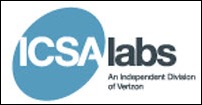
Booth 3937 and the Interoperability Showcase
Contact: Sonia Robins, accounts manager, healthcare
sonia.robins@icsalabs.com
224.500.5421
ICSA Labs provides third-party testing and certification of security and health IT products, as well as network-connected devices, to measure product compliance, reliability, and performance. For more information on the following, visit ICSA Labs at booth 3937 or at the HIMSS Interoperability Showcase.
Learn more about ICSA Labs healthcare programs for testing and certification.
ONC Health IT Certification Program. ICSA Labs tests and certifies EHR technology for the ONC’s Health IT Certification Program. ICSA Labs is an NVLAP Accredited Health IT Testing Laboratory and an ANSI Accredited and ONC-Authorized Certification Body for EHR Technology. www.icsalabs.com/technology-program/onc-ehr
IHE USA Certification. ICSA Labs and IHE have partnered to provide an IHE USA Certification program to test and certify advanced interoperability capabilities of EHRs, HIEs, patient dare devices and more. IHE USA Certification was created to bring technologies to market which enable healthcare providers and hospitals to meet today’s requirements for clinical integration. Visit the IHE USA Certification booth in the Interoperability Showcase. For more information: www.icsalabs.com/ihe
Mobile App Testing. ICSA Labs delivers mobile app testing for companies that have developed custom-made mobile apps in-house or through the use of a third party. ICSA Labs examines a mobile app across more than twenty high-level assessment objectives mapping back to four key categories: maliciousness, vulnerability, reliability, and privacy. For more information: www.icsalabs.com/technology-program/mobile-app-testing
Imprivata

Booth 2541
Contact: Maria LoBrutto, marketing events manager
mlobrutto@imprivata.com
603.703.9371
Imprivata is a leading provider of identity and access management and secure clinical communications solutions that simplify healthcare IT for better focus on patient care. Imprivata OneSign single sign-on and authentication management deliver fast, secure No Click Access to clinical applications. Imprivata Cortext is a powerful communications platform that enables more efficient care team coordination.
By removing technology barriers, Imprivata allows doctors to spend more time being doctors.
Infor (formerly Lawson)

Booth 3049
Contact: Tara Waldron, healthcare field marketing manager
healthcare@infor.com
651.767.6142
Lawson and Cloverleaf are now even stronger with Infor. Visit us at HIMSS and enjoy free beverages and popcorn in our Relaxation Zone. Take a survey and be registered to win a $2,500 American Express card.
To learn more about our solution strategy, “Health 3.0 – The Path Forward” and our products, including financials, supply chain, HCM, analytics, and integration, and HIEs, schedule a demo with an Infor Healthcare representative by visiting http://www.infor.com/himss.
Also, don’t miss our interoperability showcase presentation February 26 from 1-1:30 p.m.
Ingenious Med, Inc.

Booth 471
Contact: Courtney Schickel, VP of marketing
courtney.schickel@ingeniousmed.com
678.336.1721
With a 15-year tradition of innovation and excellence, Ingenious Med is excited to make its biggest announcement yet at HIMSS14. Beyond debuting substantial changes and upgrades to the existing product line, we at Ingenious Med are unveiling a host of brand new functionality as well as announcing a redefinition of the market space itself, with the introduction of the patient encounter platform. The PEP is a new concept built to serve today’s needs while preparing healthcare enterprises for tomorrow’s challenges.
Ingenious Med continues to break new ground under the leadership of its founder, Dr. Steven Liu, developing useful solutions to increase the quality of care, reduce cost, protect and bolster revenue, and most importantly of all, put physicians’ time where it is needed most: with their patients. Come by booth 471 and find out more.
Stop by booth 471 to learn more about the new patient encounter platform and enter for a chance to win an Apple TV.
Innovative Healthcare Solutions

Booth 1729
Contact: Dan Hereid, vice president of business development
dhereid@ihsconsulting.com
303.579.5419
IHS, along with several of our exhibiting neighbors, will be hosting a block party on Tuesday, February 25th from 4-6 pm. Please stop by to enjoy a variety of catered food and drinks.
IMO – Intelligent Medical Objects

Booth 3341
Contact: Dennis Carson, director of marketing and tradeshows
dcarson@e-imo.com
847.272.1242
IMO – Intelligent Medical Objects is the most widely-used and physician-preferred terminology service for EHRs. Our technology allows clinicians to use the language they are most familiar with to better capture and preserve true clinical intent. We’re ready to support your transition to ICD-10 and your attestation for Meaningful Use. Visit us at booth 3341 and learn more about how IMO can help.
Our presentations include:
- All About IMO Problem (IT) Terminology
- All About IMO Procedure (IT) Terminology
- Achieving Meaningful Use with IMO
- Are You Ready for ICD-10-CM?
- Clinically Coherent Problem Lists with IMO Problem List Management
Click to reserve your spot: http://www.e-imo.com/event/himss-14. www.e-imo.com
InterSystems Corporation

Booth 2741
Contact: Jerry Hinch, director of North American marketing
jerry.hinch@intersystems.com
617.621.0600
What is strategic interoperability and why do you need it?
You need strategic interoperability if your organization is to efficiently:
- Engage patient and clinician communities
- Coordinate all patient care
- Manage population health
- Turn big data into insights and action
Visit InterSystems at HIMSS14, booth 2741, Hall B to learn more about strategic interoperability. Step into InterSystems’ must-see presentations at HIMSS to win a Fitbit Flex. Each time you step into an InterSystems-sponsored presentation at HIMSS14 you gain another chance to win one of 30 Fitbit Flex Wireless Activity and Sleep Wristbands we’re giving away.
Juniper Networks

Booth 3703
Contact: Ryan Witt, global managing director of healthcare industry practice
rwitt@juniper.net
650.492.3480
Juniper Networks is in the business of network innovation. From devices to data centers, from consumers to cloud providers, Juniper Networks delivers the software, silicon and systems that transform the experience and economics of networking.
Additional information about Juniper Networks for the healthcare industry can be found at www.juniper.net/healthcare.
LDM Group

Booth 3544
Contact: Todd Helmink, vice president of business development
thelmink@ldmgrp.com
312.391.4233
LDM Group, LLC (LDM) is a leading provider of behavior based prescription management programs. LDM provides timely and clinically relevant healthcare messaging through its patented process which serves to improve patient compliance and outcomes, while preserving privacy. As a targeted healthcare communications company, LDM connects prescribers, pharmacists, and patients. LDM’s network is made up of e-prescribing, electronic medical record (EMR), and electronic health record (EHR) applications, chain and independent pharmacies, and sponsors of healthcare-related educational materials such as pharmaceutical manufacturers, health plans, payors, and PBM’s.
LDM’s products and services:
- Are delivered in workflow through the trusted healthcare professional thus building better provider-patient relations
- Allow for a configurable solution that adapts to specific protocols to support consistent and reliable outcomes
- Provide customized patient education and engagement programs that help meet Meaningful Use and ACO requirements
- Ensure multiple delivery methods for patients based on patient preferences (print, email, SMS, etc.)
Legacy Data Access, LLC

Booth 3130
Contact: John Hanggi, director of customer services
jhanggi@legacydataaccess.com
678.701.5589
Running old applications just to get to the old data? We need to talk!
As an innovator in data storage and web-based solutions, Legacy Data Access provides the industry’s most comprehensive set of software tools for working with data from retired systems. Whether you’re looking to retire old applications, simplify your IT landscape, or meet long-term data retention requirements, Legacy Data Access successfully stores data from health care systems that are being retired and provides secure, web-based and interactive access to the information.
We have been using elephant imagery for many years now. When we first thought of this idea, it was based on the saying “the elephant in the room“; i.e., that large issue that no one wants to acknowledge but is there and needs care and feeding. This year Legacy Data Access has partnered with Zoo Atlanta on a “Protector” level sponsorship for the elephant exhibit. Legacy Data Access will be handing out “I Love Elephants” buttons. For each person that comes by and agrees to wear the button all day, we will donate a dollar to the sponsorship.
Leidos Health

Booth 3753
Contact: LeAnne Hester, SVP of strategy and marketing
LeAnne.Hester@leidoshealth.com
877.652.4099
What’s the biggest challenge you’re facing today? Let us know at booth 3753 and you’ll have an opportunity to win a free Health Check to help with your biggest healthcare challenge. We’ll also make a donation in your name to the Tour de Cure Leidos team which supports the American Diabetes Association.
lifeIMAGE

Booth 2009
Contact: Jackie Leckas, director of marketing
jackie@lifeimage.com
617.990.2262
Medical image exchange has become a mainstream solution for healthcare enterprises. More and more hospitals are adopting it to improve the efficiency of clinical staff, increase patient safety and satisfaction, increase referral volumes, and eliminate wasteful spend. If your team hasn’t already been asked to evaluate image sharing, chances are it will come up at some point this year.
Let lifeIMAGE give you an introduction to image sharing at HIMSS. Why lifeIMAGE? Because hundreds of leading hospitals use our solutions to electronically receive outside study data, integrate it with the EMR, and securely publish exams to referring physicians and patients. We’ve got a proven Epic integration and we were recently named Cerner’s exclusive partner for image sharing. Lastly, lifeIMAGE was given “Category Leader” designation by KLAS as part of its recent 2013 Best in KLAS Awards: Software & Services, an honor based on customer feedback. Leverage our experience to learn how medical image sharing could be the next big thing at your institution.
Lifepoint Informatics
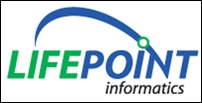
Booth 6069
Contact: William Seay, CEO
jsierra@lifepoint.com
201.447.9991 x359
Visit our booth for a chance to win a Google Chromecast. Hourly drawings during exhibit hours will be made.
LightSpeed Health, Inc.

To schedule a meeting:
Contact: Michael Justice, president
mjustice@lightspeedhealth.com
305.799.0990
LightSpeed Health is a healthcare software and services company focused on solving IT related issues for ambulatory practices. We are experts in archiving and migrating EMR/EHR and PM systems, our archive systems have been deployed in the largest physician networks in the country, in over 15 states. We work with health systems to develop and execute the IT strategies related to physician practice acquisition – data migration, clinical and financial interfacing (HL-7 and X-12), implementation support, training, workflow analysis, and ongoing user support.
Our team has particular expertise in Allscripts Enterprise and GE Centricity EHR and PM systems.
Specialties: EMR/EHR data archives and migration, Allscripts Enterprise EHR and PM systems, GE Centricity EMR and PM systems, EMR/EHR selection and implement support, and EHR/PM facilities management agreements.
Logicare

Booth 7867
Contact: Michele Mick, account executive
michele.mick@logicare.com
414.335.5361
LOGICARE provides patient-specific education and discharge instructions across healthcare organizations to support workflow of clinical users and integrate with all major EHR systems. LOGICARE is ONC-Certified for Meaningful Use Stages 1 and 2, helps improve HCAHPS scores, and reduce hospital re-admission.
LOGICARE is a division of The Wellness Network, the largest, most comprehensive in-hospital health TV network in the US. www.logicare.com
We will be giving away an ipad. Also, we are offering Starbucks gift cards for attendees interested in viewing a WebEx demo after convention.
The Loop Company

To schedule a meeting:
Contact: Gino Johnson, founder and managing director
info@loopcompany.org
802.857.5464
The Loop Company is a research advisory firm with more than 20 years’ experience helping healthcare technology organizations grow their business. Our focus is on delivering actionable strategic and tactical learnings to help your organization successfully launch new products/services, enter new target markets, win more new business, and build loyal customer relationships.
What we do:
- Collaboratively design customized qualitative feedback loop mechanisms to help your organization understand how it is being perceived in the marketplace, by your customers and prospects.
- Advance organizational improvement across all areas of your business including: sales, marketing, positioning and messaging, brand awareness, product development, roadmap validation, operations, installations/implementation, support, account management.
MBA HealthGroup

Booth 3695
Contact: Ethan Bechtel, CEO
ethan.bechtel@mbahealthgroup.com
866.383.8932
MBA HealthGroup has been one of the fastest-growing healthcare consulting groups in North America for three years. We specialize in strategic consulting, Epic and Allscripts consulting, ICD-10, and revenue cycle management services. Our vision is to improve patient care experiences by making hospitals and physician practices stronger and smarter. Our products include OHMD, a secure mobile messaging platform to improve patient engagement, and, FormMation, a form automation tool for EHRs.
McKesson Corporation

Booth 1365
Contact: Ed Domansky, communications manager
edward.domansky@mckesson.com
404.338.3710
McKesson is a leading healthcare services and information technology company dedicated to making the business of healthcare run better.
At HIMSS14, our key Better Health 2020 solutions will be on display in the McKesson and RelayHealth booths (1365 and 1665). You won’t want to miss the latest in solutions for population and risk management, connectivity/interoperability, strategic management, physician performance improvement, Paragon integrated health IT, enterprise imaging and more!
And, McKesson is pleased to offer Expert Chats in booth 1365. A broad range of subject matter experts will be available for discussions on contemporary topics, including population health, the use of analytics to reduce administrative and clinical variation, and profitable medical group management, to name a few.
http://sites.mckesson.com/himss14/
MedAssets

To schedule a meeting:
Contact: solutions@medassets.com
888.883.6332
MedAssets (NASDAQ: MDAS) is a healthcare performance improvement company focused on helping providers realize financial and operational gains so that they can sustainably serve the needs of their community. More than 4,200 hospitals and 122,000 non-acute healthcare providers currently use the company’s evidence-based solutions, best practice processes and analytics to help reduce the total cost of care, enhance operational efficiency, align clinical delivery, and improve revenue performance across the care continuum.
For more information, please visit www.medassets.com.
MedData

Booth 513
Contact: Dustin Whisenhunt, VP of client services and sales – Patient Pay
dustinw@meddata.com
954.531.5235
MedData eliminates confusion and frustration with the medical billing process. We simplify the communication process, consolidating each patient’s bills and focusing on patient satisfaction while increasing our clients’ revenue. We work with patients to make sure they understand their bills and payment options, and help them navigate any insurance issues.
Our proprietary workflow is built around the patient, our ability to consolidate all their bills and help them understand what they owe, and ultimately increase the patient satisfaction scores for our clients. The result is a minimum revenue increase from the patient responsibility portion of the payer mix of over 30 percent while finding an additional 15 percent or more of unfilled insurance, all while generating an ROI of over 100 percent in the first few months. Visit our booth for a quick demo of our proprietary service – no appointment required.
HIMSS giveaways: $1,000 Amazon gift card, three $100 American Express gift cards, fresh baked scones every day.
Medfusion

Booth 8354
Contact: Jolene LoFrese, marketing manager
jolene_lofrese@medfusion.com
919.882.2816
Come see us at booth 8354 as well as the interoperability showcase and meet our team and pick up an infuser water bottle.
Medicity, A Healthagen Business

Booth 6150 (Healthagen)
Contact: Peter Martin, marketing director
pmartin@medicity.com
404.245.1830
Medicity is one of the most trusted partners in health information exchange, providing industry-leading technology to physicians, hospital systems, and government agencies for more than 15 years. We proudly power a network of more than 1,000 hospitals, 250,000 end users, and 20 regional and state-wide HIEs, all processing more than 2 billion clinical transactions each year. But we aren’t stopping there – we are constantly innovating to put our clinical integration expertise to work in a changing healthcare environment.
Visit http://medicity.com to learn more or schedule an appointment with us today.
Medicomp Systems

Booth 2703
Contact: David Lareau, chief executive officer
info@medicomp.com
703.803.8080
See Inga do it all! Come by booth 2703 to check out the one solution for all clinical documentation and see Inga headlining Quipstar on Tuesday, February 25 at 3:00 p.m.
Medicomp Systems will host Quipstar, world’s favorite HIT quiz show. The interactive health information technology quiz show kicks off on Monday, February 24 at 2:30 p.m. Additional shows will be on Tuesday at 11:00 a.m. and 3:00 p.m. and Wednesday at 11:00 a.m. and 2:00 p.m. Contestants and those seated in the live studio audience will use Medicomp’s easy-to-use nursing and physician documentation tool, Quippe, to answer questions about documentation and coding requirements.
Everyone receiving Quippe training and seated in Quipstar’s live studio audience will have a chance to win one of the latest tablets and an opportunity to become a Quipstar contestant and compete for cash prizes. Maybe you will be chosen to compete against Inga or another HIT heavy hitter! This year, Quipstar will highlight Quippe’s nursing, physician, and patient engagement tools.
MediQuant Inc.

Booth 1929
Contact: Mindy Morris, marketing manager
mindym@mediquant.com
800.917.6379
MediQuant provides a feature rich active archiving solution for any clinical, PFS, or ERP application that needs to be retired. Simplify your IT world and reduce the cost of system conversions with DataArk, an active archiving solution that allows you to decommission old systems, maintain interoperable access to old data, and realize up to 80 percent cost savings. FirstComply and AccuRules are MediQuant solutions for medical necessity and ABN compliance.
Stop by our booth 1929 for a chance to win a gift card.
Netsmart

Booth 3952 and Interoperability Showcase
Contact Mike Sheppard, vice president of marketing
msheppard@ntst.com
631.968.2024
What is the “missing population” and why should you care about it? If you’re managing an ACO, health home, or integrated care organization where value-based contracts are top of mind, you need to know about one of the highest cost, most underserved populations in healthcare: people with behavioral health disorders. Integrating acute care and behavioral health services is critical to improving overall health outcomes in a population where the severely mentally ill die 25 years earlier than the general population, and co-morbid physical and mental health illnesses drastically drive up Medicaid and other loss ratios.
Netsmart is the leader in clinical coordinated care technology for behavioral health and the larger health and human services provider communities, and the ideal partner to help you link your primary care initiatives with broader, coordinated care for the body and the mind.
Netsmart was selected to participate in the HIMSS Interoperability Showcase and with Epic will demonstrate the integration and care coordination of physical health and behavioral health.
Also visit us in booth 3952 to see how Netsmart CareManager seamless integrates clinical data between two or more organizations to efficiently and safely coordinate care delivery.
Nordic

Booth 2130
Contact: Adam Dial, vice president of client relations
adam.dial@nordicwi.com
608.469.6154
Nordic provides top-ranked Epic implementation consulting to over 87 clients across the country. With a team of over 350 Epic-certified consultants, we not only deliver the right resource at the right time, but also know there’s more to consulting than just having the answers. Our passion is in partnering with our clients: providing mentorship, knowledge transfer, and an extra set of hands during key build deadlines. We demonstrate the leadership and confidence that comes from having worked with more than 80 percent of Epic’s customers.
In addition to being ranked #1 by KLAS for Epic implementation and support, Nordic has also launched three lines of business that help clients realize more ROI from their EMR. Nordic’s Optimization Solutions, Affiliate Solutions, and Remote Solution groups all have dedicated experts who work with clients to create addition efficiency, usability, and satisfaction of their EMR.
Please visit us in booth 2130 to hear more about how we can assist with any Epic needs and enter for a chance to win an Optimization Assessment or Affiliate/Connect Planning Visit.
The Optimization assessment is a $7,500 value and includes trip to an Epic customer site with shadowing of users and a system evaluation, followed by a written report listing workflow and system optimization opportunities. The Affiliate/Connect planning visit is a value of $5,000 and includes a one- to two-day visit to an Epic customer site to assist in the development of a written strategy to extend an Epic system to the organization’s affiliated or acquired practices and hospitals. We will contact the winners the week after HIMSS.
NTT DATA, Inc.

Booth 765
Contact: Larry Kaiser, senior marketing manager
lawrence.kaiser@nttdata.com
631.824.5318
NTT DATA offers healthcare organizations a complete IT solution with applications that increase efficiency, reduce medical errors, and enhance the revenue cycle. Led by our flagship solution, Optimum, NTT DATA helps bring together healthcare consumers and providers to share data and manage care effectively. We back that engagement process with a full range of clinical, RCM, accounting, and mobile solutions.
nVoq

To schedule a meeting:
Contact: Debbi Gillotti, vice president and general manager
deborah.gillotti@nvoq.com
206.465.1765
nVoq provides a cloud-based speech recognition platform (SayIt) exclusively endorsed by the AHA. We support real-time dictation for any EMR as well as voice-enabled workflow through automated shortcuts and scripting. SayIt can be used on both Windows and Mac OS computers.
SayIt in Healthcare is sold exclusively through channel partners. Unlike other vendors in this industry, nVoq has no direct sales force and does not provide transcription services. We want to grow, not compete with, our reseller network.
We welcome inquiries from app developers, EMR resellers, and HIT services firms interested in becoming channel partners. We’re also happy to make contact directly with providers or IT leaders to discuss your requirements and connect you with one of our certified resellers.
Talk to us about building a SayIt practice or using the SayIt SDK to voice-enable your applications platform. Learn why SayIt from nVoq is the sensible alternative for your organization.
Visit http://www.nvoq.com for more information.
Optum

Booth 5665
Contact: Alena Larson, marketing
alena.larson@optum.com
Find balance in fee-for-service and fee-for-value. Optum helps the health system work better for everyone. We’re a global team of over 65,000 people working collaboratively across the health system to improve care delivery, quality and cost effectiveness. Our innovative technology, services and applications help our clients achieve better patient outcomes and optimize their financial performance today. Visit us at HIMSS and see how our next generation clinical and financial analytics can help you navigate the journey from providing care to managing health.
Orchestrate Healthcare

Booth 2935
Contact: Charlie Cook, president
charlie@orchestratehealthcare.com
970.963.0251
We’re an agile boutique consulting company delivering back-to-back Best in KLAS technology services with an old-fashioned commitment to customer service. Our healthcare IT consultants concentrate solely on EMR clinical implementation with an Epic concentration, integration, health information exchanges (HIEs) and staff augmentation.
Come see us to learn more about our laser-like focus which attracts the best talent resulting in on-time, within-budget projects and delighted organizations.
Orion Health

Booth 965
Contact: Kristin O’Neill, senior marketing manager
kristin.oneill@orionhealth.com
857.488.4740
Today’s healthcare challenges are driving major change in how we deliver care. Now more than ever, conversations are taking place around the concept of a “coordination of care” platform that provides a single version of the truth regardless of where patients receive care.
Orion Health has you covered with the technology you need to succeed in the age of accountable care. Visit us at booth 965 and see first-hand how our collaborative care and integration solutions can help position your organization for success.
View a demo. Meet our clients. Attend informational sessions. It’s all here for you with Orion Health at HIMSS14. Visit http://www.orionhealth.com/himss14 to learn more.
Park Place International

Booth: 2186
Contact: Bryan Blood, VP of sales
bryan.blood@parkplaceintl.com
877.991.1991
Park Place International provides technology integration, technical consulting, and OpSus|Cloud Services designed to help customers achieve operational sustainability with their Meditech Electronic Health Record.
Park Place is an approved provider of technology solutions for all versions of the Meditech HCIS and offers a full selection of Meditech-certified server and storage platforms.
The Park Place team has extensive Meditech experience and technology expertise and is uniquely qualified to architect, deliver, and support Meditech solutions.
Stop by booth 2186 to learn more about Park Place International and enter our raffle for a chance to win an Amazon.com gift card.
Passport Health Communications

Booth 2134
Contact: Stacy Gillespie, vice president of marketing
stacy.gillespie@passporthealth.com
615.661.5657
Passport Health Communications Inc. provides software and solutions to help hospitals and health care providers improve business operations and secure payment for their services. Passport serves more than 2,500 hospitals in addition to more than 9,000 physicians, clinics, and ancillary offices across all 50 states and processes more than 485 million transactions annually through its Passport eCare brand of patient access and payment certainty solutions for the revenue cycle. Passport was recently acquired by Experian Healthcare in November 2013.
Come by our booth to learn more about our revenue cycle solutions and how they can help make workflow more efficient. Come by for a demo and you will be entered to win an American Express gift card.
Patientco

Booth 4021
Contact: Pete Heydt, SVP of business development
pete.heydt@patientco.com
770.329.8579
Patientco provides an intuitive suite of cloud-based revenue cycle automation tools designed to work seamlessly together to maximize patient revenue like never before. From the initial statement to the last payment made, we take a patient-centric approach to handle each step of the process with the same level of care you give to your patients, improving your business, one patient at a time.
Features include:
- Patient-centric statements and eBills
- Simple and secure online bill pay
- Point-of-service payment processing
- Automated phone payment system
- Secure patient-to-provider messaging
- Lockbox paper check processing
- Correspondence handling
- Returned mail processing
- Business intelligence reporting
PatientKeeper Inc.

Booth 1603
Contact: Kathy Ruggiero, senior director of corporate marketing
kruggiero@patientkeeper.com
617.899.6521
PatientKeeper is a leading provider of healthcare applications for physicians, with over 50,000 users across North America and the UK. At HIMSS14, visitors can see live, commercially available versions of PatientKeeper’s CPOE (ranked easiest-to-use by KLAS®), med rec, physician documentation, electronic charge capture, and other applications that streamline physicians’ workflow, running as a native app on popular smartphones and tablets, as well as on desktop and laptop computers.
See how PatientKeeper makes healthcare IT painless for physicians and IT professionals alike.
PatientSafe Solutions

Booth 3983
Contact: Tim Needham, vice president
tneedham@patientsafesolutions.com
760.712.7343
PatientSafe Solutions is leading the way in smart point-of-care mobile solutions, driving safe and high-quality care throughout the patient experience. The PatientTouch mobile technology platform supports enhanced clinical workflows and voice/messaging communications on a single, handheld device. Through safety improvements, increased productivity, workforce engagement and satisfaction, and EMR optimization, the PatientTouch solution drives enhanced financial performance in the hospital environment. PatientSafe Solutions works with clients leveraging the PatientTouch system to improve performance management by eliminating harm, reducing waste, and improving productivity.
PatientSafe will be raffling a GoPro Hero3+ each day. Come by booth 3983 to visit.
PDR Network

Booth 454
Contact: Andrew Gelman, SVP of corporate development
andrew.gelman@pdr.net
917.655.5431
PDR Network is the nation’s leading aggregator and distributor of FDA-approved drug safety information and patient support services, reaching healthcare providers directly through the Physicians’ Desk Reference suite of digital and print services. PDR Communications provides direct access to more than one million healthcare professionals with both promotional vehicles (PDR Addenda, drug approval notifications, eDrug updates, and clinical/professional updates), and clinical vehicles (drug alerts, recall/withdrawal warning notifications, and dear HCP letters).
Healthcare professionals access trusted PDR content across channels, including via: the Physicians’ Desk Reference (PDR), the most recognized drug information reference available in the US, now available in multiple formats; PDR interactive drug services for EHR systems; PDR.net, the online home of the PDR; and mobilePDR for handheld devices.
For more information on our products and services, please stop by booth 454 or visit www.PDRNetwork.com.
Perceptive Software

Booth 4765
Contact: Jeneane Crawford, global campaigns manager
jeneane.crawford@perceptivesoftware.com
650.255.5504
Healthcare organizations and providers are struggling with an incomplete patient story when relying on the EMR alone for patient information. The reason? There’s a vast collection of unstructured content that the EMR does not manage – clinical images, digital photos, scanned documents, and video files – and the volume of this content is growing exponentially.
Join Perceptive Software at HIMSS14 in booth 4765 where we’ll demonstrate how you can deliver a complete patient record by bridging the content gaps in your existing applications. We will show you how to optimize your EMR and other IT systems by bringing all content, no matter the source, into view.
At booth 4765 solution experts will be available to discuss how we can help you:
- Capture all unstructured content including clinical images, videos, photos and documents making them accessible from the patient record
- Improve collaboration across content-centric departments and processes
- Image-enable your EMR
- Streamline finance and human resources workflows by eliminating manual tasks
- Unlock valuable content regardless of where it exists with enterprise search.
PerfectServe

Booth 5293
Contact: Leigh Ann Myers, chief clinical officer
lmyers@perfectserve.net
865.212.6140
PerfectServe is a single, intelligent, unified communications platform that connects clinicians in any care setting—across the care continuum. Whether you’re part of a solo medical practice or a world-class health system, PerfectServe can help you drive meaningful improvement in your care delivery processes.
Visit us in booth 5293 to learn how we’re helping clinicians connect with each other quickly, easily and securely. And while you’re there, grab a yummy cake pop. They’re sure to be a crowd favorite and will give you that needed spurt of energy to get you through the rest of the day.
To learn more about PerfectServe, visit http://perfectserve.com.
PeriGen

Booth 2092
Contact: Suzanne Trajkoski, director of marketing
suzanne.trajkoski@perigen.com
609.480.4428
Visit PeriGen booth 2092 to learn how our evidence-based fetal surveillance solutions are helping leading hospitals save moms and babies. Meet our client, Baystate Health, a 2014 HIMSS presenter and 2014 Healthcare Informatics Innovator of the Year semi-finalist about the ROI of data-driven obstetrics and the policy they instituted to restrict early labor inductions.
pMD
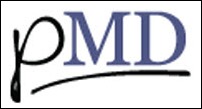
To schedule a meeting:
Contact: Chrissy Braden, director of business operations
sales@pmd.com
800.587.4989
pMD develops software that is powerful, flexible, reliable, and easy-to-use. pMD’s mobile charge capture solution enables physicians to enter billing charges anywhere, at anytime from iPhone, iPad, and Android devices. pMD eliminates the tedious paper processes and administrative elements that burden doctors and their practices, while reducing charge capture lag from weeks to less than a day.
Charge capture is unbelievably easy with pMD’s advanced code search functionality, which gives providers a quick and convenient way to select customized codes. pMD’s ICD-10 Converter automatically maps codes in one click and allows customers to incorporate the ICD-10 code system instantly or incrementally. Additionally, pMD’s secure messaging allows physicians to send sensitive information quickly and securely, all directly from within the pMD app.
The pMD team is committed to developing the best solution on the market and providing superior customer service.
Predixion Software

Booth 4893
Contact: Jennifer Dodos, director of marketing
jdodos@predixionsoftware.com
949.322.6181
Predixion helps healthcare organizations leverage data to predicatively manage a variety of population health challenges that are distributed via clinical systems or portable devices.
Predixion is a disruptive predictive analytics software company with a unique focus on the development of portable predictive applications via its patent pending Machine Learning Semantic Model and the Last Mile of Analytics – the deployment of powerful predictions to the people who need to act upon them. Predict Everything.
HIMSS products showcased:
- Predictable Length of Stay: Predixion’s newest predictive health management solution is Predictable Length of Stay (LOS). Predictable LOS gives healthcare providers the ability to identify patients that are at risk of experiencing an extended LOS and, most importantly, directing frontline care providers to interventions that are most likely to reduce the excess LOS as well as measuring the outcomes of those interventions.
- Predixion and Azure: Predixion’s solutions are now available for deployment utilizing the Azure Cloud Services and available HIPAA BAA.
- Predictable Readmissions: Predixion’s market-proven solution, Predictable Readmissions, helps identify patients at risk of readmission from the moment they are first admitted to the hospital allowing for more tailored care during the patient’s stay and better continuity of care post discharge.
Prominence Advisors

To schedule a meeting:
Contact: Bobby Bacci, president and CEO
HIMSS@prominenceadvisors.com
bobby.bacci@prominenceadvisors.com
Prominence Advisors will be hosting an event for current and prospective customers on Tuesday evening. Anyone interested in attending can get details by using the email HIMSS@prominenceadvisors.com.
Refreshing: that’s the word that comes to mind when talking about Prominence Advisors. This fast-growing healthcare IT consulting firm is doing things differently and finding new ways to apply technology, strategy, and analytics within the healthcare industry.
Proximare Health

To schedule a meeting:
Contact: Shawn Wagoner, president
swagoner@proxhealth.com
512.635.4059
If patient access, leakage, and referral management are words you are hearing a lot of lately please take time out to learn how Proximare has helped several organizations with these challenges. Our product was developed in collaboration with clinicians and operations leaders over a decade ago at one of the largest systems in Chicago and has managed over two million patient transitions to date.
Sample client results:
- Referral processing time was reduced from three months to 5.5 days
- 22 percent of referrals were screened out as inappropriate
- Referral volume increased sevenfold with fewer employees needed to manage it.
Qlik

Booth 3111
Contact: Tracy Behar, national director of healthcare
Tracy.Behar@QlikView.com
919.931.9994
Qlik (NASDAQ: QLIK) is committed to changing the world by making it easier to make more insightful decisions and act on them. The QlikView Business Discovery software platform and Qlik Customer Success Framework provide people, technology and service, helping organizations optimize data as a strategic resource. QlikView uses Natural Analytics to support the way people naturally analyze information. It enables users to see associations, make comparisons, and anticipate outcomes in a natural way, rather than forcing them down inflexible drill paths. QlikView gives the immediate insights businesses need with the enterprise governance IT requires. Qlik serves approximately 30,000 customers in 100+ countries.
Join Qlik at booth 3111 to hear customer testimonials, experience a live demonstration, receive a massage, and more.
QPID Health
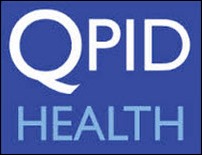
To schedule a meeting:
Contact: Amy Krane, marketing
amy.krane@qpidhealth.com
617.308.5476
Connie Thompson, sales
connie.thompson@qpidhealth.com
404.964.1478
EHRs offer huge promise and great challenges. But as any clinician will tell you, it’s frustrating and time consuming to get the patient story you need for a specific clinical encounter. QPID solves that problem.
Developed and proven through use by thousands of clinicians at the Mass General and other leading hospitals, QPID finds and delivers digests of relevant patient history from anywhere in the patient’s record. From structured data fields and free-form text notes. And across EHRs, HIEs and other data repositories.
Learn why QPID users say, “I can’t believe I ever practiced without this.” If you’re ready to optimize your EHR, let’s talk.
Quest Diagnostics

Booth 3064
Contact: Geena Berry, ChartMaxx marketing
Geena.K.Berry@QuestDiagnostics.com
513.204.2455
Quest Diagnostics – more than a world leading lab company. Every day, more than 2400 hospitals and 300,000 physicians count on Quest Diagnostics HIT solutions to help improve patient outcomes and empower connectivity. We invite you to visit our HIMSS booth 3064 to learn about the full HIT solutions Quest Diagnostics offers and hear from industry leaders giving brief educational presentations on technology topics including data analytics and security, achieving the financial value of integrated care coordination, and Meaningful Use.
Visit our booth 3064 at HIMSS to learn more about our integrated solutions including:
- Our award-winning ChartMaxx Enterprise Content Management helps your organization better manage documents and data with integrated clinical, financial, and administrative workflows
- Care360 Data Exchange and Care360 EHR empowers physicians, health systems, patients, and ACOs to stay synchronized and connected
- Hospital Diagnostics Services to create lab benefits and value
- Health IT Quality Solutions to streamline and enhance the quality of your EHR interoperability with us
- IntelliTest Manager to access and effectively manage new test information, test updates, and changes based on specific account utilization
- Joint Directory of Services (JDOS) combining Quest Diagnostics laboratory tests and your hospital’s laboratory tests in one succinct directory
- Patient portal and mobile health app technology to empower better health, promote information exchange, and transparency
- Blueprint for Wellness to empower measurable health improvement, improve productivity and lower healthcare costs
Stop by our booth on Tuesday, February 25 to meet New York Giants Super Bowl Champion Stephen Baker “The Touchdown Maker” and get an autographed mini-football. Steve will speak on the value of wellness programs in improving health and outcomes through diagnostic insights.
The first 100 attendees to stop by the Quest Diagnostics booth will be eligible for a special Blueprint for Wellness screening voucher. This screening offers a current snapshot of your health featuring simply-stated insights and highly personalized content that provides an understanding of your health.
We are more than a world leading diagnostic lab company, we empower enterprise connectivity. Visit our booth to find out how we are elevating interoperability and helping healthcare organizations maximize their HIT investments.
For more information visit http://QuestDiagnostics.com.
ReadyDock Inc.

Booth 8056
Contact: David Engelhardt, founder and president
david@readydock.net
860.729.8170
ReadyDock:UV for mobile devices is the first and only chemical-free disinfection multi-bay docking station on the market. Tablet PCs are high-touch surfaces that require frequent disinfection in clinical and germ-sensitive settings. ReadyDock is a complete solution providing secure storage, charging, and disinfection all in one workflow friendly solution.
ReadyDock will be showing its new mobile device disinfection tray now allowing USB compliant charging and disinfection of tablets and other mobile devices. ReadyDock also provides a free iOS application called CleanMe available on the iTunes store to help remind and education users to clean and disinfect their devices per their own personal disinfection policy.
Free disinfection during exhibit hours: come by our booth and bring your dirty device with you … we’ll take care of it.
RelayHealth

Booth 1665
Contact: Nastran Andersen, executive director
nastran.andersen@mckesson.com
770.237.7016
RelayHealth Clinical solutions provide aggregated, relevant information at the point of care to help organizations coordinate care across settings and make financial reimbursement decisions in evolving care models. Our vendor-neutral ability to capture and aggregate data from a variety of disparate sources including clinical, financial, payer, pharmacy, and government setting provides the broad data aggregation you need for a truly comprehensive view of your patients’ longitudinal records. Efficient, workflow-integrated solutions help your providers access clinically relevant information on the spot and minimize redundant tests, hospital readmissions, and medical errors.
Please join us for a cocktail reception and presentation with Jersey Health Connect in the RelayHealth booth on Monday during HIMSS.
Sandlot Solutions

Booth 5783
Contact: Rosalind Bell, director of marketing
rbell@sandlotsolutions.com
817.810.5210 or 512.294.5200
Sandlot Solutions is a physician-inspired healthcare IT company with the expertise to build the connection for any organization exchanging healthcare information to improve the quality of care, manage risk, and reduce costs supporting accountable care and other payment models.
The company’s configurable technology streamlines data-sharing, supporting provider organizations with health information exchange, data analytics, and care management solutions. Sandlot was founded in 2006. Visit http://sandlotsolutions.com for more information.
Stop by the Sandlot Solutions booth to learn about our new product Sandlot Connect Lite. Based on the proven technology of Sandlot Solutions, Sandlot Connect Lite is our simple, entry-level notification solution designed to help you gain immediate efficiencies – encouraging adoption among the physician community and serving as the stepping stone to greater exchange of information, analytics, and community care management.
Shareable Ink

Booth 2117
Contact: Chris Driscoll, vice president of sales
crdiscoll@shareableink.com
978.273.5082
Shareable Ink is the clinical documentation and analytics company that allows hospitals and physician practice groups to extend their existing EHR investments.
Using your forms, your efficient workflows powered by our enterprise cloud-based platform. We digitize your workflow starting with your forms. We use natural input tools such as the iPad and digital pen and paper to quickly capture clinical documentation at the point of care. Access to your data becomes immediate, effortless, and actionable, allowing clinicians to stay efficient, focus on delivering quality patient care, and improve financial performance.
Shareable Ink has two special special promotions and one giveaway:
1) Special giveaway – ask for a demo and enter for a chance to win an iPad mini.
2) Special promotions – patient intake starter kit. Includes three patient intake forms: general consent; HIPAA consent; patient history intake, MU structured data. And, 15 percent discount off Anesthesia Cloud for iPad with ShareMU sign-ups before March 31, 2014.
Siemens Healthcare

Booth 3165
Contact: Suzanne Edison, marketing specialist
suzanne.edison@siemens.com
954.260.7719
Siemens Healthcare will showcase premier HIT solutions that help providers advance their mission of better financial performance and a better patient experience across the continuum of care. From the EHR, to revenue cycle management, mobility, cloud computing, health information exchange, and population health management, Siemens has solutions for providers in this era of accountability. Stop by to see our newest product: CareXcell.
Siemens has answers for provider initiatives including patient safety, strengthening the revenue cycle, and enabling technology to improve patient care. Let us swipe your badge for a donation to StandUp 2 Cancer.
The SSI Group, Inc.
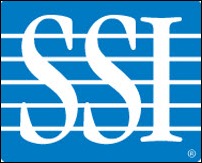
Booth 1745
Contact: Amanda Elmore, sales promotions manager
amanda.elmore@ssigroup.com
800.880.3032
SSI is a forward-thinking innovator that is powering the business of healthcare through improved flexibility, connectivity and integration. The company offers a single-vendor, end-to-end Revenue Cycle Management (RCM) solution featuring front-end eligibility; industry-leading, best-in-class billing and claims transmission; contract management, denial management and attachment processing; and an advanced analytics and business intelligence product suite. With over 1,000 payer connections through its EHNAC-certified clearinghouse, SSI processes 600 million transactions annually, totaling in excess of $800 billion in billed electronic claims revenue.
Stop by our booth to refuel at the beverage station while you charge your mobile devices at the “Power Tower.” The SSI Group, Inc. is “Powering the Business of Healthcare” but we are also powering YOU at HIMSS14.
Streamline Health

Booth 2829, Knowledge Center Booth 883
Contact: Matt Seefeld, senior vice president of solutions strategy
matt.seefeld@streamlinehealth.net
858.964.8558
Streamline Health is a leading provider of SaaS-based healthcare information technology solutions that enable faster, more informed decisions to help providers meet the challenges of an ever-changing healthcare industry. The company’s comprehensive suite of solutions includes: business and clinical analytics, clinical documentation improvement, computer assisted coding, enterprise content management, and integrated workflows.
Stop by and play our interactive memory game. Daily $100 winner for fastest time.
Summit Healthcare

Booth 1021
Contact: Jason Behan, national sales director
jbehan@summit-healthcare.com
781.519.4840 ext. 154
Summit Healthcare delivers the right results — every time, guaranteed. Offering an easy-to-use, flexible, and robust technology platform with proven industry experience, Summit Healthcare is the smart choice. With a complete toolset for addressing integration, workflow automation, and business continuity needs, taking control of your healthcare systems has never been easier. We strive to provide the industry with the most flexible technology with complimentary tailored services and solutions.
Enter our drawing to win a free iPad. Stop by our booth for a warm, freshly baked chocolate chip cookie.
Sunquest Information Systems, Inc.

Booth 4447
Contact: Auna Emery, manager, marketing communications
marketing@sunquestinfo.com
Sunquest is the market leader in the laboratory, delivering diagnostic information technology and outreach solutions designed to fulfill the business objectives of today’s healthcare leaders. Sunquest is committed to providing comprehensive solutions that deliver quality diagnoses, optimize efficiency, improve patient safety, and respond to a changing market.
With more than 30 years of experience, Sunquest continues to be the chosen partner for more than 1,700 laboratories and over 300,000 end users worldwide. Sunquest serves the global marketplace with reliable technology for mission critical applications, enabling providers to deliver optimal care across their network.
Sunquest has redefined the lab, empowering its partners to turn results into knowledge.
We will be giving away Labrador puppy plush toys (“Sunquest Lab”), Sunquest tote bags, ChapStick, and pens.
Surgical Information Systems

Booth 6465 and the Intelligent Hospital
Contact: Steven Litton, market analyst
slitton@sisfirst.com
800.866.0656
Transform your EHR data into information that can drive big results.
SIS Analytics is now available for use with all leading EHRs (http://bit.ly/1cE2zPL) and perioperative systems, making it easy for you to deliver the insight perioperative leaders need to reach peak performance.
- Schedule a meeting http://info.sisfirst.com/himss14-request-demo to see SIS Analytics at HIMSS and be entered to win a Bose SoundLink Bluetooth speaker.
- Register to see your perioperative data in SIS Analytics
- See SIS in action at booth 6465 and in the Intelligent Hospital
- Find out how Robert Wood Johnson used SIS Analytics to add $3.5 million in additional revenue to their bottom line at the HIMSS Clinical and Business Intelligence Knowledge Center
SIS’s proven perioperative IT solution helps hospitals increase operational efficiencies, improve financial performance, and deliver better patient outcomes.
Symantec

Booth 1041
Contact: Margaret Turano, healthcare marketing
Margaret_Turano@Symantec.com
617.242.7809
Symantec understands healthcare security. Hospitals and providers are struggling to ensure that the sharing and exchange of patient data is private and secure. They are implementing complex IT systems to support and protect EHRs, as well as computerized physician order entry (CPOE) to reduce preventable errors. Simultaneously, they are tasked with meeting regulatory compliance, optimizing IT service levels, and gaining clinician acceptance—all without being distracted from the main focus: delivering quality patient care.
Symantec understands the unique needs of the healthcare market and is working with providers, industry organizations, and technology partners to find the best possible solution to meet their IT challenges.
Visit Symantec booth 1041 and learn:
- How to best address the rise of mobile devices in your environment
- How to comply with industry best practices and standards, discover your information vulnerabilities, establish security across the healthcare organization, and help protect your reputation
- How to harness your clinical and administrative data and ensure it is managed, protected, and stored efficiently and effectively
- How to maintain secure 24×7 operation of clinical IT systems
Mingle with the experts! Join us Monday, February 24 and Tuesday, February 25 from 3:30-6:00 p.m. for drinks, hors d’oeuvres, and great conversation with leading healthcare industry experts.
Enter to win! Stop by Symantec booth 1041 and enter to win a home theatre system complete with a 70” 3D Flat-Panel TV, 3D Blu-ray Player, home theater sound bar, and installation.
Talksoft Corporation

Booth 4466
Contact: Ken Walsh, president
partners@talksoftonline.com
866.966.4700
Founded in 1997, Talksoft is an applications service provider (ASP) of reminder and notification services using phone, text, email, and mobile app.Talksoft’s service based approach provides affordable solutions for businesses of any size.
Our appointment reminders, recall, bill reminder, outreach, and broadcast services utilize the latest technology to improve your office’s efficiency and patient engagement.
Visit our booth 4466 to utilize our free charging station for your phone or computer and to pick up your luggage tag. Additional information can be found at http://www.talksoftonline.com or by calling 866.966.4700.
TeraMedica, Inc.

Booth 3843
Contact: Robin Schroeder-Janonis, VP, sales
sales@teramedica.com
414.908.7719
Visit TeraMedica at booth 3843. Schedule your booth appointment by clicking here.
While at HIMSS14, learn more about Evercore Univision EV, a zero-footprint, multi-modality enterprise viewer supporting a full spectrum of patient images and data, both DICOM and non-DICOM. Univision EV meets a wide a range of clinical needs by providing a robust toolset. Through next-generation integration with TeraMedica’s Evercore VNA, a comprehensive patient view is delivered using a browser-based, tremendously scalable solution supporting all devices in the enterprise, including iOS and Android mobile devices.
T-System

Booth 2071
Contact: Ann Baty, senior marketing manager
abaty@tsystem.com
469.791.2445
T-System advances the practice of emergency medicine with technology solutions proven to solve clinical, financial, operational, and regulatory challenges for hospitals and urgent care clinics. Approximately 40 percent of the nation’s emergency departments leverage T-System solutions to provide an unmatched patient experience.
Through gold-standard documentation, revenue cycle management, and performance-enhancing solutions, T-System optimizes care delivery from the front door through discharge and beyond. Today, more than 1,900 hospitals rely on T-System solutions. For more information, visit http://www.tsystem.com or follow @TSystem on Twitter.
Stop by our booth every day starting at noon for freshly baked cookies and more information on our end-to-end solutions for emergency care.
Valence Health

Booth 4249
Contact: Stacey Pearson, director of sales operations
spearson@valencehealth.com
312.526.7394
Valence Health (www.valencehealth.com) helps healthcare providers better manage their patient populations and accept financial responsibility for the quality of the care they provide. With unique data collection and analysis tools, Valence Health has emerged as a leader in population management, serving dozens of clients from small physician groups to Cleveland Clinic.
In-depth actuarial analysis combined with operational excellence allows Valence to not only advise but also provide ongoing services to provider organizations operating under various value-based reimbursement models. From risk-based contracting to accountable care organizations (ACOs) to administering provider-sponsored health plans, Valence has been helping providers appropriately accept and manage financial responsibility while improving clinical quality since 1996.
With headquarters in Chicago and three other office locations, Valence Health helps manage the health of more than 13 million patients nationwide. Follow Valence Health on LinkedIn and Twitter.
Please visit our booth 4249 and stop by for a technology demo.
Versus Technology

Booth 3673
Contact: Stephanie Bertschy, director of marketing
info@versustech.com
877.9VERSUS
Oh yeah, we’ve got “BIG” data. And better yet, it’s accurate, unbiased and collected without data entry.
Our real-time locating system (RTLS) is the most-deployed for patient flow and process improvement, producing analytics that are hard to capture in any other way.
See it in action at our new Experience Center — a live, real-time demonstration — and learn why Versus is the only RTLS accurate enough to automate workflows and effectively monitor hand hygiene. Be one of the first to see our new mix-and-match RTLS platforms, offering interchangeable wi-fi, wireless, and wired options, all featuring the same infrared accuracy Versus is known for.
The new platforms work with the same badges and tags, including two new options: the Mini Asset Tag, the smallest available on the active RTLS market, and our waterproof, wearable Patient Wrist Badge.
And back to that “BIG” data, we’re also unveiling version 5.0 of our advanced reporting software, Reports Plus Analytics. This major upgrade features several new reports developed hand-in-hand with healthcare administrators and clinicians, offering unprecedented insight into facility workflows. Proven software, proven solutions, and multiple platforms including both wireless and wi-fi options — there’s never been a better time to invest in RTLS. To reduce HAIs (HIMSS-acquired infections), look for the SafeHaven hand hygiene dispensers throughout the convention center. Tear off an entry card from the display to win one of five tablet computers. Or, visit booth 3673 to enter.
Virtelligence, Inc.

To schedule a meeting:
Contact: Akhtar Chaudhri, CEO and founder
achaudhri@virtelligence.com
Nicole Francen, marketing communications specialist
nfrancen@virtelligence.com
952.548.6601
Virtelligence, a national healthcare and IT consulting firm, offers a unique consulting model that provides a results-driven partnership with clients and a work environment that offers colleagues a path for professional growth unequaled in the industry.
Key service offerings include:
- Strategic guidance and project management
- Software implementation and optimization
- Software development and integration
- Revenue cycle optimization
- Clinical transformation
- Meaningful Use and ICD-10 projects
Virtelligence consultants have practical hands-on expertise and training with major healthcare and technology vendors, including: Allscripts/ Eclipsys, Cerner, Epic, MEDITECH, Microsoft, Oracle, SAP, and Lawson.
Virtelligence has earned national recognition and numerous awards for being a rewarding work place and delivering lasting client successes: Best Places to Work in the Minneapolis/ St. Paul area, HCI 100, Inc. 5000, and the Minnesota Business Journal’s Fast 50.
Vital Images, Inc.

Booth 1677
Contact: Nichole Gerszewski, marketing manager
ngerszewski@vitalimages.com
952.487.9500
Vital Images, Inc. will be providing real-life examples of how it is helping healthcare organizations image-enable their EHRs, HIEs, and EMRs. The company will be hosting receptions at booth(1677 on Monday starting at 4 p.m. and Tuesday starting at 5 p.m. It will also be participating in the Interoperability Showcase throughout the week with a featured live case study presented by Dr. Rab of Hackensack University Medical Center on Tuesday at 4:30 p.m. in Hall F.
Stop by the Vital booth to learn more about image-enabling your EHR, HIE, or EMR.
VitalWare

Booth 735
Contact: Ashlee Piper, marketing coordinator
ashleepiper@vitalware.com
509.941.8018
Visit VitalWare in booth 735 to view a demo, receive a daily prize, and be entered to win a full one-year license to iDocuMint.
Vonlay LLC

To schedule a meeting:
Contact: Casey Liakos, director of client relations
casey@vonlay.com
612.209.8255
Since 2009, Vonlay has been handpicking the best application, technical service and development experts from across the HIT ecosystem to work with our clients. And we are proud of the results: a creative, supportive, hardworking company that has a deep commitment to client success.
Vonlay has a unique focus on technology, leadership, and design in the Epic space and beyond. We’ve helped new clients build strong foundations with their implementations. We’ve helped established clients innovate and create a competitive edge with staffing, portals, development, and reporting services.
For more information, visit http://www.vonlay.com
Wellsoft Corporation

Booth 4364
Contact: Denise Helfand, VP, sales and marketing
dhelfand@wellsoft.com
800.597.9909
Consistently ranked #1 emergency department information system (EDIS) by KLAS (most recently awarded Best in KLAS 2013), Wellsoft EDIS offers an exceptional combination of experience, extensive workflow analysis, and award winning customer support. Wellsoft EDIS is certified for Meaningful Use. Software features include patient tracking, clinical documentation, CPOE/results, charge capture including infusion charge capture, risk management, and CCD/CCDA document exchange. Wellsoft is EDIS at its BEST.
Visit Wellsoft at booth 4364 to have a brief demonstration and discuss how Wellsoft EDIS fully integrates with HIS and ancillary systems.
Winthrop Resources

Booth 1693
Contact: Dan Mandy, director of business development
dmandy@winthropresources.com
952.656.7687
Winthrop Resources Corporation specializes in financing information technology projects and clinical equipment to the healthcare industry. Our goal is simple – to provide hospitals a cost-effective solution with the flexibility to migrate, upgrade or change equipment when/if required during the lease term.
Winthrop is a financially stable single investor owned by TCF Financial (NYSE: TCB); we retain ownership in all of our transactions and are not dependent on 3rd parties for funding. All of this allows us to provide a unique, strategic, high value method to manage change as your technology needs and desires evolve. Cash or simple bank financing work well for other asset classes, but are not designed to accommodate the dynamics associated with technology equipment.
Xerox

Booth MP06
Contact: Kirsten LeMaster, VP of marketing and communications
kirsten.lemaster@xerox.com
877.414.2676
Today’s Xerox simplifies the way work gets done in surprising ways. Like supporting healthcare professionals in over 1,700 hospitals. With consulting services, Midas+ analytics and adoption solutions from The Breakaway Group, A Xerox Company, we help healthcare providers apply, manage, and use technology that simplifies caregiver workloads. So you have more time to focus on delivering the level of care everyone deserves.
Visit us at MP06 Contact us at hpsmarketing@xerox.com or 877.414.2676 http://services.xerox.com/healthcare-solutions/enus.html
Comments Off on HIStalk’s Guide to HIMSS14







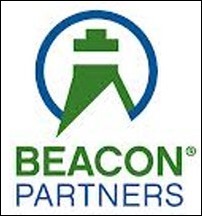




















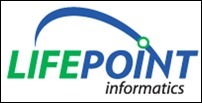










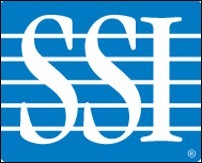










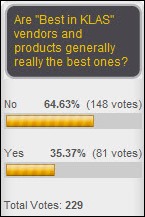

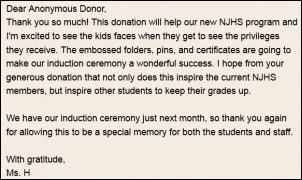

































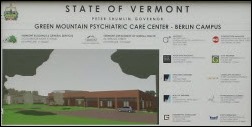
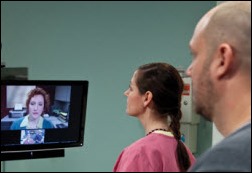
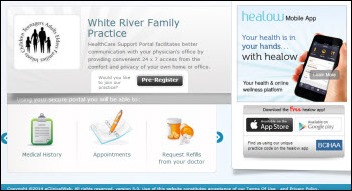



































































































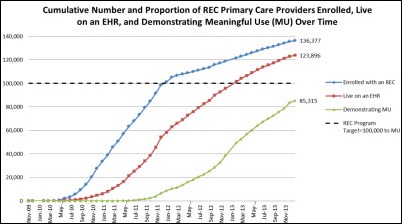
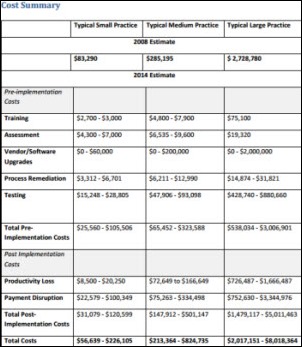
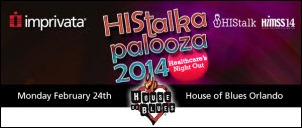

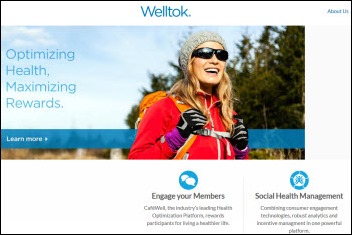

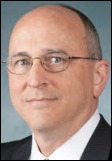
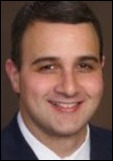
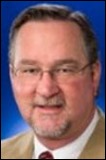
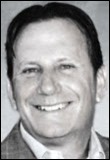
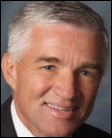

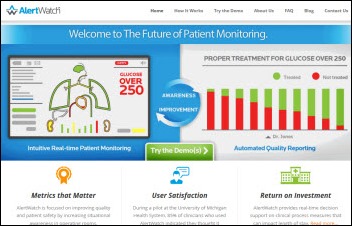
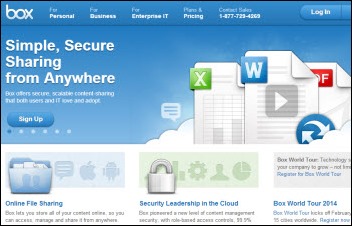
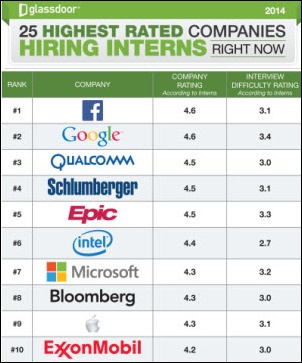



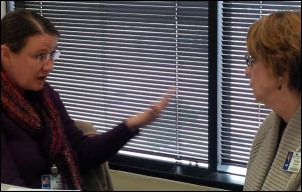







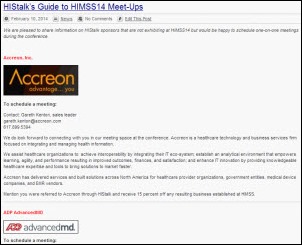
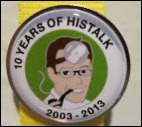













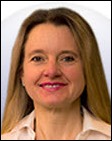
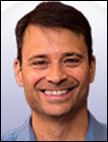

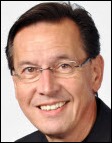
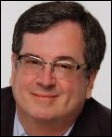
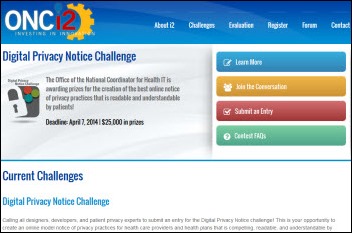







Traditionally Professional Courtesy is something that physicians gave each other - but we had to be careful with it when…